A Creative Event Marketing Case Study: How I Stood Out With an App
Published by chantelle on august 22, 2020 august 22, 2020.

A Creative Event Marketing Case Study (or How an App Helped Me Stand Out at a Conference)
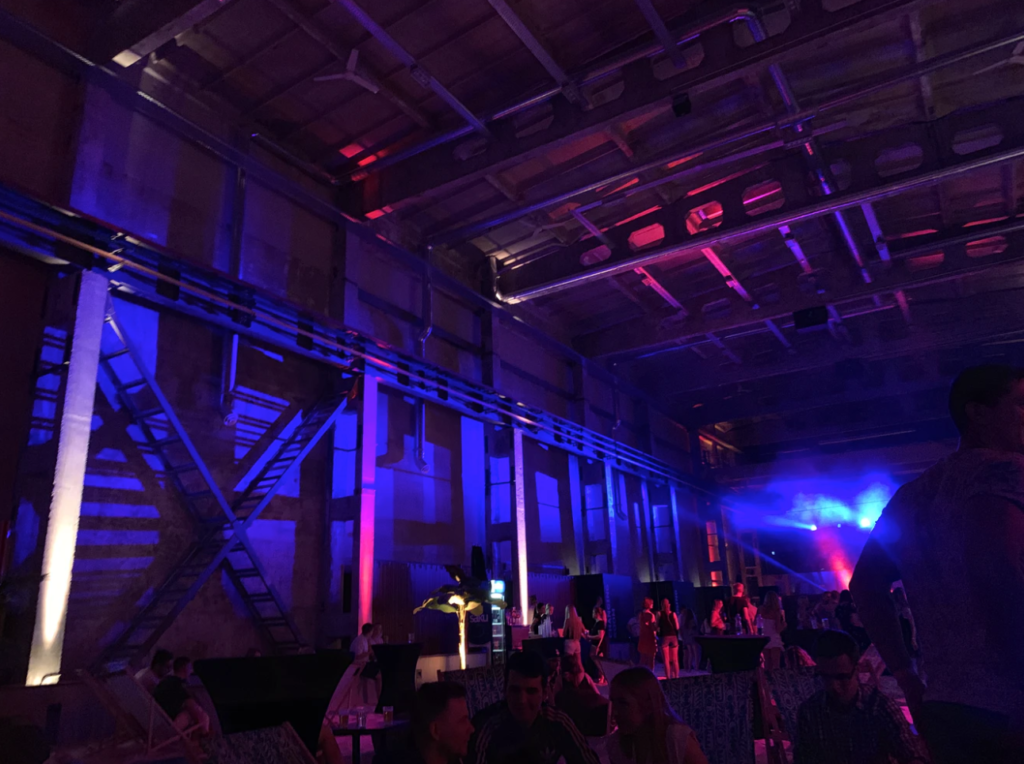
On the surface this is a straightforward case study about a creative event marketing idea involving an app that got results in the areas of brand awareness, relationship building, and even an actual deal.
But it’s also about the process.
- Getting buy-in for creative marketing ideas
- The challenges in getting the event marketing campaign teed up
- How you can put the (limited) resources you already have to good use
- Thinking through creation of an effective, memorable marketing campaign
- Measuring success of your marketing
Our Story Begins…

The year is 2016.
It’s a much simpler time, before much of the globe had ever even worn a surgical face mask among polite company.
I was managing marketing strategy for a hospitality technology company. It offered a SaaS platform for hotels to provide digital and mobile services as part of a better, more modern guest experience.
Every year there was one season in particular we all looked forward to and dreaded at the same time.
Tradeshow season.
Mandatory attendance at the self-proclaimed largest hospitality technology conference in the world.
In our industry, you had to be there in order to maintain your relevance.
And, as the company’s marketing lead, every year I stressed over rallying the entire company and project managing all the details of our participation.
It wasn’t my first time, but 2016 would be my last time attending with the company (a fact I didn’t know at the time).
In the Room Where It Happened
Every year I had the same discussion with the executives at our strategy meetings.
How can we make a (cost-effective) splash?
Can we stand out in a sea of booths and companies crowing about being the first or best to do this or that? How can we get the best bang for our buck?
I remember often finding myself standing at a dry erase board and jotting down whatever ideas the team blurted out.
We’d actually tried quite an impressive variety of event marketing stunts in the past several years since we’d made our debut.
- The “Silver Men” who were paid actors covered in silver spray paint providing photo opps and drawing traffic to our neck of the woods.
- A magician who put on quite a display of tricks.
- Lots of tchotchkes.
It was a delicate balance because you didn’t want to spend a ridiculous amount on event marketing.
Tracking the ROI of a tradeshow booth and the related investments into event marketing is a difficult venture.
For most industry events, the attendees are largely going to be the same group. Many are already customers. Many others are already in conversation with your sales team. If you have a long sales cycle, as we did, you often weren’t going to have anyone walk into the booth and want to sign a contract on spot, especially when there were multiple layers of decision makers to involve.
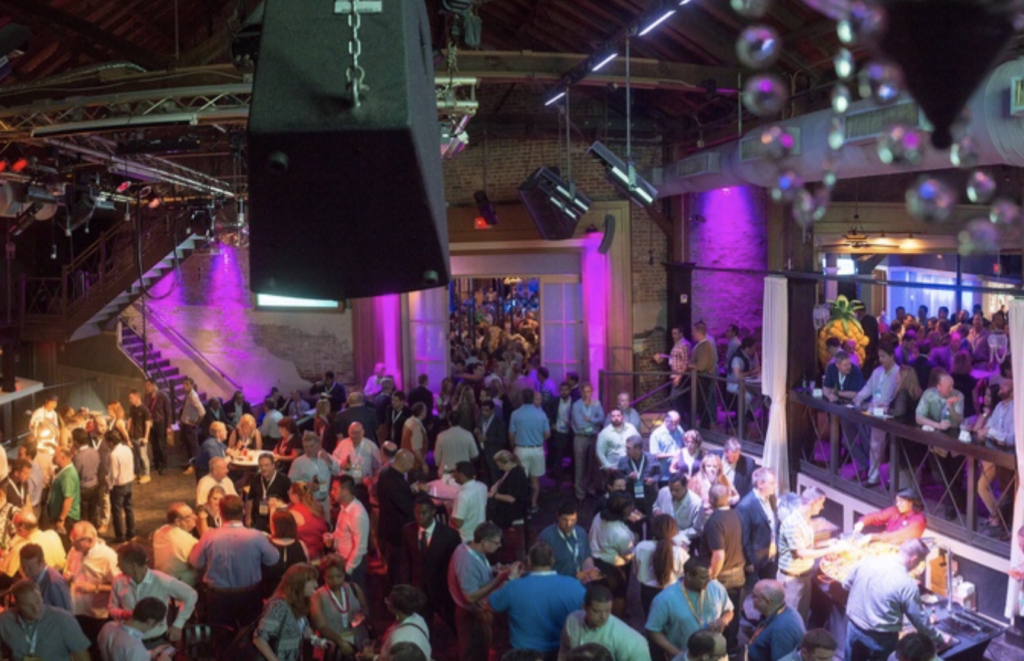
But this year I had an idea.
The Idea, the Pitch, the Pushback
“What if we did an event marketing app? Like an app for attendees that let them try out some of the features we offer through our actual customer apps.”
There were a few groans in response.
A one-time-use app?
Apps were (and are) a dime a dozen.
The app stores for both iOS, Android and other mobile platforms are infamously bloated. You’re competing with every other brand, not to mention games and a wide assortment of the millions of other apps.
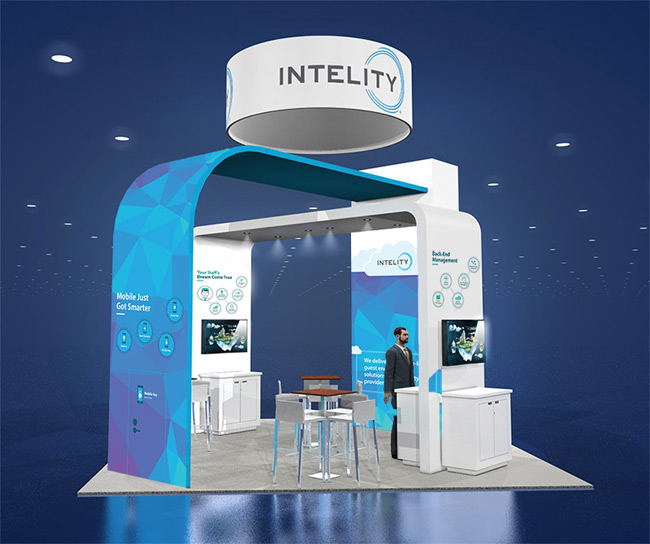
“Nearly 1 in 4 people abandon mobile apps after only one use,” warned a TechCrunch article from 2016.
But too many times the response to “Let’s try this” is “But there are already so many others doing it.”
There are a ton of other apps, as is the case with anything else in marketing, including webinars, white papers, e-books, etc. It’s certainly a competitive landscape for any marketing content.
To me, that just means you need to be strategic and focus on delivering major value with high-quality, consistent content.
And that’s about the gist of what I said to the team after the groans.
It wasn’t an easy push.
Every department already had a full plate, but delivering on the creative event marketing idea was going to take teamwork.
So I had to stick by the mentality of “work smarter, not harder.”
I also had to get resourceful and take on more of the lift myself if I wanted to get things done with a very limited (next to zero) budget.
The Essentials of a Successful Creative Event Marketing Campaign

Here are some of the elements that were crucial to the success of this event marketing campaign (and the app):
1. Cross-Functional Support
The marketing team (we were a small team of about 4) would take on the brunt of the work. I would head up strategy and lean on our CX team on execution and project management.
As an aside, we had an amazing CX team. The Director of CX was so supportive, even if her team was already slammed with projects. I’ll always remember something she said. “Each of us in the company aren’t just serving our external customers. We’re also here to serve and support each other. We should think of our teammates as customers, too.”
I mention this to say:
Successful Marketing isn’t done in a silo.
Being able to successfully collaborate with other teams and rely on the wealth of knowledge they offer in other areas is so crucial to making a campaign more impactful.
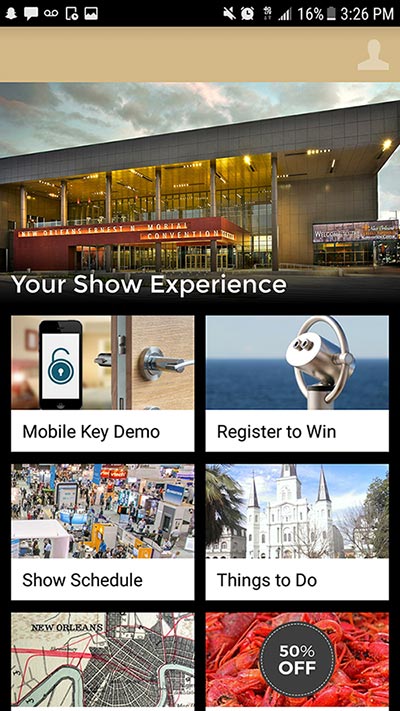
Can’t tell you how much I appreciated being able to rely on our Product & Development team to help me build out the shell of the app and submit to the App Store/Google Play store for approval. And the CX team for content management support. And my own Marketing team for tons of brainstorming sessions and extra work to meet deadlines.
2. Transparency Across the Organization
Great marketing ideas often start with marketing the idea itself.
Scratch that, almost all great ideas start with marketing the idea itself.
If you can’t get people on board with your mission, especially the people making decisions and allocating budget, you’re going to have a much more uphill battle.
In this case, I was starting at a disadvantage because the rest of the team was wary about what would be required of them and the eventual ROI.
Getting everyone else on board meant first sharing the plan in a very open and detailed way, and then taking in some of their feedback to let them feel like they were also a part of things.
It was also important to share photos and reviews from the actual event and end users of the app since not everyone in the company got to attend and interact directly with the users.
3. Project Management Outline and Checklist
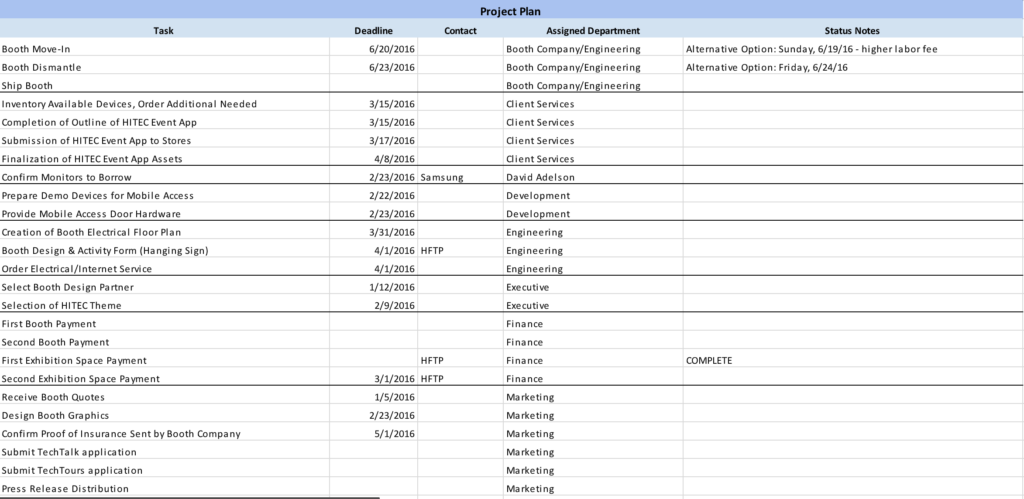
A lot of marketers are very good at coming up with brilliant ideas, but not so great at mapping out the execution in a detailed manner.
With so many people in the company involved in creating the app, I had to create a very thorough outline of responsibilities and timeline for deliverables. That allowed each member of the team to review and commit to their portion of the work.
That’s not to say the project management outline was in black and white.
There had to be room for a lot of flexibility where possible. And not going to lie, I had to do a lot of reminding and following up. That’s par for the course when you’re leading the completion of a marketing campaign or project.
4. A Lot of Creativity and Ingenuity
The main point of building out the app was to showcase some creative event marketing that would get attention.
I had a former boss tell me to brainstorm like I have all the money and resources in the world. That way there’s nothing dampening my creative spirit. The ideas flow more freely when you aren’t thinking to yourself, “Oh, better not get too creative. That’ll never happen.”
When you’ve fallen in love with an idea, you can start stretching your brain to get resourceful.
In this case that’s what I did.
The original inspiration for the app came from something I saw another company do at CES.
They developed an app for show attendees that (a) showcased some of the things the company’s products were capable of, and (b) served as a way of developing brand recognition and building relationships with attendees in the brand’s ICP.
Finding inspiration from others and figuring out how to translate brilliant marketing campaigns for your own company’s benefits gives you a leg up because you can learn from others and spin things to fit your own needs/style.
Reviewing the Event Marketing App Itself
Now let’s review some of the features of the actual event marketing app and what made it successful.
1. To help bring in a marketing budget, I offered real estate within the app to our partners and other companies that were attending the trade show. These companies could add their branding into the app for a fee. This included push notifications from those companies sent via the app about announcements they wanted to make to show attendees.
2. To get people to download the app, I knew there needed to be a compelling answer to WIIFM (what’s in it for me?). So I developed messaging around answering this question. I also focused on this question when deciding what content and features to include.
Some of the content included in the event app:
- Map of the convention center floor so people knew how to get around and where different booths were.
- Flight schedule at the local airport where app users could look up their flight information
- List of local attractions, shopping centers, and restaurants
- Schedule of things my company had planned to do in the booth
- Schedule of social events and parties affiliated with the conference or other exhibitors
3. People at a conference might not have time to do much sightseeing after being at a conference all day, plus the evening social events.
But one thing I knew they would need to do was eat. With that in mind, I cold called almost every restaurant owner/manager around the convention center where the conference would take place. I told them in exchange for offering a discount of some sort to app users, I’d put their business in the app, where they would be seen by the thousands of attendees. And I was able to get 3 or 4 different restaurants to agree.
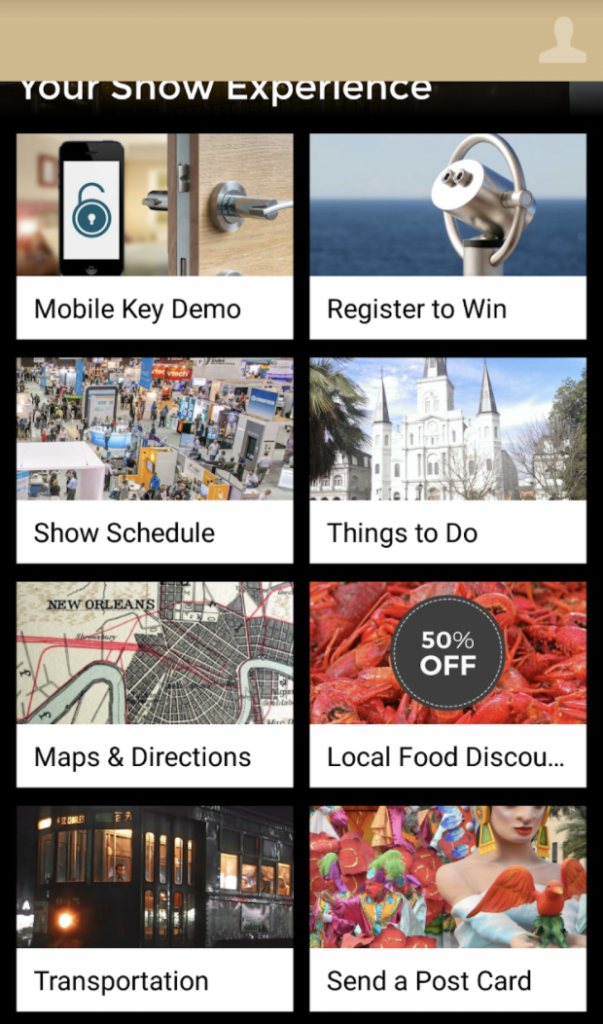
4. A lot of exhibitors will offer a giveaway. I wanted to not only have a great giveaway, but also find a way to incorporate that into the app.
We ended up giving away a GoPro and a tablet, but to register to win, you had to submit through the app itself.
This turned out to be one of the better ideas because it not only incentivized downloading the app, it also gave us some visibility into who actually did download. Several notable industry executives and decision-makers actually appeared among the names of those who registered to win.
Measuring Success of Creative Event Marketing
When examining the full costs and everything put into the event and the app, the number was pretty incredible. It’s amazing how fast costs add up, although the bulk of expenditures around a trade show or event are going to be related to the logistical pieces.

Travel and operations. All the charges incurred through the convention center expenses, like booth WiFi, clean up, shipping and storage, etc.
Yup, even a waste basket for the booth is going to cost you.
But when you don’t have contracts signed at the actual event, drawing a direct line from revenue to the event marketing efforts can be tough.
Tallying up all the foot traffic through the booth is usually a primary metric that’s discussed to help measure reach and awareness. It doesn’t necessarily paint a good picture of the event ROI, though, because plenty of people go through a booth and aren’t a prospective buyer. They just want a branded pen or to drop their business card in a fish bowl for a raffle.
A certain degree of measuring success of event marketing is intuitive.
Listening to customer and prospect conversations and how many times your event presence or marketing efforts are mentioned. This includes monitoring social media buzz.
It was a conversation that revealed how successful the event marketing app we built was.
A few months down the line, the CEO pulled me aside to give me an update.
Apparently a decision maker from a large hospitality brand used the app and liked it so much, they reached out to ask us to create a re-branded version with many of the same features for another conference they would be hosting.
How’s that for a direct measure of ROI?
For more creative event marketing ideas and case studies, add me on LinkedIn or tweet me!
You can also sign up for my newsletter and get my content (plus other insight) delivered to you weekly.
Related Posts

Digital Marketing
Duolingo’s $6-billion growth marketing case study: guilt, memes, & engagement strategy.
A growth marketing case study from $6-billion brand Duolingo, a language learning app that tries to guilt trip users into more engagement.

How an Omnichannel Brand Strategy Made Target a Top 10 Ecommerce Retailer
Target emerged recently as a top 10 U.S. ecommerce retailer. Here's how they embraced resilience and adopted an omnichannel strategy.
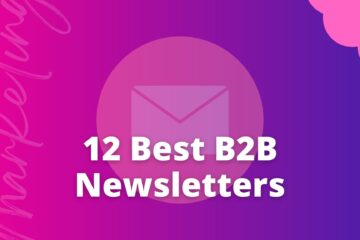
B2B Marketing
12 best b2b newsletters you should subscribe to today.
Looking for B2B newsletters to subscribe to but can’t find good ones? Read our list of the best B2B newsletters to find your favorite.
Case Studies: Successful Events Using Event Software
Introduction.
In the evolving realm of event planning, success hinges on adapting to the target audience’s demands and creating memorable experiences. This compilation of case studies uncovers the success stories of prominent organizations such as GE Healthcare, leveraging modern platforms in the information technology sector. These stories illuminate the transformative power of event software in orchestrating successful product launches, virtual and hybrid events, and esports competitions across the United States and beyond. They highlight amplified customer satisfaction, enhanced security, significant cost savings, and insightful analytics, offering valuable lessons for event planners on the path to success. Delve into these customer stories to discover how the right platform can elevate your event planning strategies.
5 Event Case Studies
Case study 1: product launch by ge healthcare.
GE Healthcare leveraged a top-tier platform in the information technology sector to successfully launch a groundbreaking product. This case study emphasizes the crucial role of analytics in understanding the target audience, leading to a memorable experience and amplified customer satisfaction.
Case Study 2: Virtual Event In The United States
As the demand for virtual events surged, a prominent firm triumphed in hosting a large-scale virtual event using advanced event software. The event offered attendees an interactive experience and demonstrated impressive cost savings, making it a success story worth noting.
Case Study 3: Hybrid Event In The Information Technology Sector
In this customer story, an IT company adeptly bridged the gap between physical and digital spaces, setting up a hybrid event that attracted a broad audience. The event showcased the platform’s security features, underscoring the importance of safety in memorable experiences.
Case Study 4: Esports Competition
This case study recounts how a leading Esports organization used an event software platform to deliver an exceptional experience for attendees, from live streaming to real-time social media integration. This success story encapsulates the power of creating memorable experiences for a specific target audience.
Case Study 5: United Nations Conference
The United Nations harnessed event software to enhance the attendee experience at a crucial conference. With robust analytics, seamless security, and improved customer satisfaction, this case study is an example of how event planners can utilize technology for successful and impactful events.
The Skift Take: These case studies demonstrate the powerful role of event software platforms in facilitating successful events, from product launches to large-scale conferences. Leveraging technology, organizations like GE Healthcare and the United Nations have improved attendee experience, enhanced security, saved costs, and gained valuable insights. These success stories serve as a testament to the transformative potential of information technology in event planning.
Why Event Badges Will Never Be The Same Again [Case Study]
The digital revolution has forever changed the face of event badges. In our case study, we delve into how technology-driven badges have enhanced the event experience, providing not just identity verification, but also serving as a tool for networking, data collection, and improving overall attendee engagement.
How To Increase Engagement With Your Event App By 350% [Case Study]
In this case study, we unravel the strategy behind a staggering 350% increase in event app engagement. Through a blend of user-friendly design, interactive features, and personalized content, the case underlines the power of a well-implemented event app in boosting attendee interaction and enhancing the overall event experience.
How To Meet Green [Case Study]
This case study explores the concept of sustainable event planning. It illustrates how a platform’s features can facilitate ‘green’ events, thereby reducing environmental impact while ensuring a memorable attendee experience. Such initiatives highlight the potential for event software to contribute meaningfully towards global sustainability goals.
How To Increase Attendance By 100+% [Case Study]
This case study explores the tactics employed by an organization which led to a remarkable doubling of event attendance. The successful campaign, powered by a robust event software platform, offered personalized communication, early bird incentives, and an appealing event agenda, demonstrating the potential of effective marketing strategies in boosting event turnout.
How This Event Boosted Their Success [Case Study]
This case study unravels the success journey of an event that significantly boosted their success using a comprehensive event software platform. The strategic use of interactive features, data insights, and exceptional planning led to a remarkable rise in attendee satisfaction and engagement, underlining the game-changing potential of technology in event management.
In the dynamic field of event planning. The power of leveraging advanced platforms in information technology, as demonstrated in the case studies, is clear. Success stories from esteemed organizations such as GE Healthcare. Underscore the invaluable role of event software in facilitating triumphant product launches, virtual and hybrid events, and even esports competitions. The benefits are manifold, including enhanced customer satisfaction, improved security, substantial cost savings, and the generation of valuable analytics to guide future strategies. These case studies serve as tangible proof that the right technology can significantly elevate the success of your event.
If these success stories inspire you to embrace the transformative power of event software. We invite you to experience the difference firsthand. Orderific is ready to demonstrate how our platform can elevate your event planning process. Book a demo with us today and begin your journey towards unprecedented event success.
What role do event case studies play in the event planning and management process?
Event case studies offer real-world examples of successful planning and management strategies, providing valuable insights and lessons.
How can event professionals benefit from studying real-world success stories in the industry?
They can gain practical knowledge, tactics, and inspiration to implement successful strategies in their own events.
What types of insights can event case studies provide for improving future events?
Event case studies provide actionable insights into effective planning strategies, attendee engagement, and ROI optimization.
Are there specific industries or event types that are commonly featured in case studies?
Yes, industries often featured include tech, healthcare, and entertainment, and event types range from corporate events to music festivals.
How can event planners effectively apply lessons learned from case studies to their own projects?
They can apply these lessons by tailoring the strategies highlighted in case studies. Which aligns with their event’s unique needs and goals.
Introduction Enhancing a new employee's onboarding experience is crucial in an increasingly digital world. Through our advanced onboarding software, we Read more
Introduction Artificial intelligence (AI) is revolutionizing the event planning industry, offering event planners innovative tools to craft immersive, personalized experiences. Read more
Introduction Event technology is rapidly evolving, presenting opportunities and challenges for event planners. The adoption of event tech can significantly Read more
Introduction The era of big data has ushered in an unprecedented opportunity for event organizers. The wealth of event data Read more
You might also like
15 fun cinco de mayo activities for kids, savor the best of culinary at boston restaurant week, sweet treats in san diego: nothing bundt cakes, event branding with event management software, event marketing strategies using software, why event management software is essential, get a free demo now, turn your food business into a smart restaurant for free with orderific pay at the table software.
12 Modern Event Marketing Examples to Inspire Your Strategy
Written by Molly Hocutt
Learn practical tips for engaging virtual events in this Ebook
Event marketing trends have shifted pretty dramatically in recent years. First everything went online. Then, people were desperate for in-person events. Now, the market seems to have landed somewhere in between.
According to a study by Bizzabo, 68% of event organizers are planning to include a virtual component at their next event. And 53% are “focused” or “very focused” on a fully online event strategy for 2023. And that’s without getting into the rise of the latest trend: experiential marketing.
In this article, we dissect different event marketing examples and explain how they can be modernized for 2023 with recent case studies. Check out our event marketing guide for more.
How to Make Virtual Events Engaging
Livestorm helps teams collaborate and deliver memorable live or on-demand video experiences.
Is event marketing the same as experiential marketing?
No, event marketing isn’t quite the same as experiential marketing. Event marketing is a way to promote your products or services by organizing in-person or online engagement at a specific time or date. For example, this could be any five-day in-person conference or webinar marketing event.
Experiential marketing is a type of event marketing that connects you to your consumers by stimulating the five senses to create memorable experiences. It can be used as part of an overall event marketing strategy to launch products, build brand awareness, and move prospects through the engagement funnel .
12 Examples of event marketing to give you ideas
From trade shows to thought leadership events, there are many different event types and event marketing tools to consider for your next event marketing strategy. Here are some of the most successful, with 12 real-life examples.
Experiential marketing examples
The objective of experiential marketing is to immerse consumers in a live experience. You want to inspire attendees to share this experience with others and spread positive word of mouth.
29 Rooms with Refinery29
Refinery29 is a digital media and entertainment website for young women that has seen huge success with its 29 Rooms events. Self-described as a “funhouse of style, culture, and creativity” 29 Rooms is a festival structured around a series of interactive spaces with different themes that people can explore.
Each room has unique activities and designs that draw huge crowds and get people (especially influencers) to create user-generated content. In an interview, Refinery29 said the experience had “become a physical manifestation of the Refinery29 brand”. It’s branded, but in a subtle way, using the themes of each room to reflect the interests of the target audience.
Cheetos Hands Free House
The Hands Free House at SXSW 2020 is a fun example of an experiential pop-up, which is a type of marketing event that’s made exciting by the fact that it’s temporary. This super interactive event got plenty of media coverage and social media engagement.
Playing off the fact that Cheetos leave your hands covered in orange dust (aka Cheetle), the brand jokingly suggested it was responsible for the rise in hands-free technology. The House was dubbed ‘Cheetle-on-the-fingers-friendly’, and each element was creatively designed with hands-free entry, smudge-free remote controls, and virtual assistant technology.
Virtual summit examples
A virtual summit is an online gathering of business leaders, industry experts, and speakers discussing a specific topic. Virtual event marketing through summits, webinars, and trade shows can be highly effective for reaching a wide, global audience. Attendees aren’t required to travel, so they can join from any convenient location with an internet connection. Making events more accessible can drive attendance rates and boost attendee satisfaction.
Agorapulse Agency Summit
Agorapulse is a social media management tool that hosts the online-only marketing event , Agency Summit. Aimed at digital marketing agencies, the event included live keynote speakers, workshops, and table talks.
What makes this example so successful is that it embraced the online event format while working hard to provide a human touch. The organizers placed a strong emphasis on interactivity and networking - two elements that can be forgotten at virtual events . The event emphasized:
- Meeting and chatting with peers
- Live Q&As
- Virtual vendor booths
- 1:1 speed networking
Pro tip: if you’re thinking about entering the world of virtual event marketing, make sure you’ve got an online event platform like Livestorm that enables interactivity through live polling, question upvoting, and breakout rooms.
Adobe Summit
Adobe, the creators of the PDF format and popular software such as Photoshop, went fully virtual for its 2022 edition of the Adobe Summit. Catered towards digital businesses, the summit went the extra mile to include interactive elements in over 200 sessions with training workshops and virtual learning opportunities.
The event was a huge success with over 100,000 people in attendance. The Adobe team used a smart mixture of quality speakers from high-profile brands and ‘Sneaks’ - sessions that tease future Adobe products and features. Throughout the event, Adobe provided clear takeaways and value for the attendees but also got to promote its brand.
Webinar examples
Webinars are the Swiss Army knives of the modern event marketing world, providing an easy and flexible way to reach customers with valuable content. Typically, a webinar involves a live or on-demand online video presentation with some supporting resources. Live webinars should also answer audience questions (that is, if you’re following webinar best practices !).
Livestorm & Mention
Livestorm is a video conferencing platform that hosts regular webinars to help marketing teams improve their online events. We joined forces with Mention, a social listening web app, to offer a webinar on engaging your audience with social media pre, during, and post-event.
Partnering with another brand is a great way to increase your audience reach and double up on the value provided. This webinar was packed full of useful tips and advice for promoting your events and capturing your attendees' attention. We practiced what we preached too, making sure the audience had a chance to interact during the Q&A session and that the recording was available on-demand after the live event was over.
Host on-demand events
Create on-demand events that participants can join and watch any time.
Deminar examples
Deminars are a new event marketing trend that combine a webinar format with a product demonstration. They offer an advantage over traditional in-person product demos because they’re less time-consuming and expensive to set up and run.
SurveyMonkey
SurveyMonkey is an experience management company that provides businesses with survey data about customers and employees. Its various marketing efforts have attracted 17.5 million active users. The enterprise-level subscription plan involves online product demos which, for a limited time, included free Fitbits for attendees.
This was a great incentive for potential customers and a smart way to boost attendance. Plus the registration page is clear about what attendees will learn during the deminar, while the demo format allows face-to-face interaction between sales teams and prospects.
Notion is a note-taking platform that helps teams manage their knowledge and data. It runs regular deminar events that show off the platform and provide tips on best practices. The organizers highlight the Q&A section of the demo, so potential attendees know they’ll be able to interact with the presenters and ask follow-up questions during the session.
Since each deminar only lasts 30 minutes, they’re cost-effective for the company and less demanding for busy attendees. The use of a countdown timer on the registration page helps to create a sense of urgency and attendance is made easier with the ability to register with your Google account.
Workshop examples
Workshops allow attendees to gain hands-on experience with a niche or industry-specific subject matter. They’re a highly attractive marketing channel because people are always looking for ways to improve their skills and learn ways to work more efficiently.
Asana Boot Camp
Asana is a project management tool that offers workshop ‘boot camps’ via its partnership with Branding Bear. These online workshops consist of interactive events that help users get the most out of the software.
The workshop has a super clear value proposition, to improve the user experience and increase work efficiency, and offers a great way for Asana to directly engage with its customers. The registration page also does a good job of digging into customer pain points to drive attendance and tailor the content of the events themselves.
Hubspot New Sales Enablement Office Hour
Hubspot is a customer relationship management (CRM) platform that offers regular workshop events for sales leaders. The ‘New Sales Enablement Office Hour’ event is specifically centered around answering users’ questions about both the sector and the platform.
But it also covers HubSpot platform updates and news. This means Hubspot is providing a high-value, interactive experience for attendees and heightening brand engagement at the same time. Hubspot prioritizes audience interests and emphasizes the interactive element of the event by asking attendees to post their questions in the discussion group before it starts.
Conference examples
Conferences are planned meetings of people with a shared interest or agenda and normally take place over several days. Because the event will appeal to a wide range of people within your sector you can draw high attendee numbers and position yourself as a thought leader in the industry.
Google I/O is a virtual conference for developers held by web giant Google. In 2021, it created an entirely new digital experience by gamifying the event with the I/O Adventure.
Attendees could enter an entirely virtual world to talk with Google and other developers, watch Google product demos, and earn badges. There were also:
- Keynote speakers
- New product announcements
- Technical sessions
- Q&A sessions
- Meetups and networking opportunities
Google streamed all of the sessions live and made sure to keep things interactive for attendees.
Product launch examples
A product launch event is the big unveiling of your new product to the market and the media. It offers a massive opportunity to build interest and sales and increase brand awareness.
HTC Vive XR Suite
HTC is a cell phone company that also creates virtual reality (VR) headsets. In 2020 they held a virtual event to launch Vive XR Suite - a VR software program designed to increase office productivity for remote work.
The clever twist here is that they used VR technology to launch the product. The event was held on its Vive Sessions app, a VR app used for virtual meetings in a VR space, and attendees joined in from around the world as avatars. This event is an example of the perfect synergy between product and platform and couldn’t be more immersive.
According to Grand View Research, the metaverse industry is expected to grow to $679 billion by 2030, meaning more events could take place in virtual worlds like these.
VanMoof is a Dutch electric bicycle company that had been working on the launch of their new range, the S3 series of e-bikes, when the pandemic hit. With such a physical product this put the company in a tight spot but they decided to press ahead and launch the product online.
Instead of trying to replicate an in-person event they leaned on the high-tech nature of the product and created a virtual, interactive live event. The launch included audiovisual material, interactive 3D experiences, and a live online audience.
VanMoof also made sure to include a section before the launch proper so that attendees could chat and get to know each other, and a Q&A section at the end. And the results paid off with:
- More than 6000 people tuning in
- Over 2000 questions asked
- More than 4400 bikes bought within 24 hours
- A 20% increase in sales
Find more event marketing strategies on our blog.
Event marketing in 2023 and beyond: key takeaways
As more and more brands switch to hybrid or fully online events the hi-tech future of event marketing cannot be denied. Every type of event marketing can be adapted to, and in some cases improved by, moving attendance online. To ensure success, follow these virtual event best practices :
- Choose an online event platform like Livestorm that has features such as marketing automation integrations and custom branding.
- Focus on providing a standout experience.
- Offer a strong value proposition for potential attendees and make the key takeaways clear.
- Include as many interactive elements as possible to keep attendees engaged.
- Create a visually attractive, informative, and buzz-generating registration page.
- Secure knowledgeable speakers from well-known brands.
- Don’t skip your social media event promotion .
Frequently asked questions about event marketing examples
What are the five essential features of event marketing.
The five essential features of event marketing are:
- Reaching out to the right exhibitors and presenters that match your target audience.
- Choosing the location and venue (online or offline) that fits your scope and needs.
- Gaining the highest number of attendees possible.
- Building interest in the event with promotion via email marketing, social media, and a strong registration page.
- Using the event as an opportunity to build relationships with potential customers, both during and after.
How do you create an event marketing strategy?
You create an event marketing strategy with the following steps:
- Establish achievable goals and a realistic budget
- Plan out your content schedule and speakers
- Create an attractive, informative registration page
- Promote your event in the right places
- Choose an online event platform like Livestorm to offer attendees online access
- Decide on your performance evaluation metrics
What are the three components of event marketing?
The three components of event marketing are:
- Stimulating attendees’ senses to create an unforgettable experience.
- Creating an attractive environment that communicates your brand.
- Opening up dialogue with attendees to build relationships and increase sales.
What’s the difference between event marketing and event management?
The difference between event marketing and event management is that one is about increasing product awareness and the other is about organizing gatherings. Event marketing is creating a meeting where you promote your products and services. Event management is the process of producing and overseeing these gatherings.
What is the purpose of event marketing?
The purpose of event marketing is to promote your brand, products, and services. By putting on an event you draw attention to what your business offers with the goal of raising awareness and sales.
Engage audiences
Find ideas to promote your events and make them engaging in this free Ebook.
About the author
Molly Hocutt - Content Manager
Molly joined Livestorm in 2019 as a Content Manager and manages written content production. Her work focuses on lead generation and organic website traffic.
Related articles
10 Event Marketing Trends for Success
9 min. read
What is a Seminar and How to Run One Like a Pro
8 min. read
What is Event Marketing? Strategies & Examples
18 min. read
How to Cancel an Event (+ 5 “Event Canceled” Email Templates)
6 min. read
How to Create a Virtual Event Marketing Strategy
11 min. read
The Ultimate Guide to Hosting Virtual Conferences: Steps, Tools & Cost
14 min. read
Keep in touch with Livestorm news and updates
Marketing case study 101 (plus tips, examples, and templates)

Summary/Overview
If you’re familiar with content lines like, “See how our fancy new app saved Sarah 10 hours a week doing payroll,” you’ve encountered a marketing case study. That’s because case studies are one of the most powerful marketing tools, showcasing real-world applications and customer success stories that help build trust with potential customers.
More than 42% of marketers use case studies in their marketing strategy. Let’s face it — we love testimonials and reviews. People love hearing customer stories and experiences firsthand. In fact, 88% of consumers view reviews before making a purchase decision. Case studies work similarly by providing prospective customers with real-life stories demonstrating the brand’s success.
Case studies provide a more in-depth view of how your product solves an existing problem — something potential buyers can relate to and learn from.
In this article, we take a closer look at what marketing case studies are, why they’re important, and how you can use them to improve your content marketing efforts. You’ll also learn the key elements of a successful case study and how to turn a good case study into a great case study.
What is a marketing case study?
A case study is a narrative that documents a real-world situation or example. A marketing case study is a detailed examination and analysis of a specific strategy, initiative, or marketing campaign that a business has implemented. It’s intended to serve as an all-inclusive narrative that documents a real-world business situation and its outcome.
Marketing case studies are tools businesses use to showcase the effectiveness of a particular tool, technique, or service by using a real-world example. Companies often use case studies as sales collateral on websites, email marketing, social media , and other marketing materials. They provide readers with a firsthand look into how your product or service has helped someone else and demonstrate the value of your offering while building trust with potential customers.
Some common key components of a marketing case study include:
- Context: A case study begins by describing the business’s situation or problem. This often includes challenges, opportunities, or objectives.
- Strategy: An outline of the tactics or strategy utilized to address the business’s situation. This includes details such as the target audience, messaging, channels used, and other unique aspects of the approach.
- Implementation: Provide information about how the strategy was implemented, including timeline, resources, and budget.
- Results: This is arguably the most crucial part of a marketing case study. Present the results through data, metrics, and key performance indicators (KPIs) to demonstrate the impact of the strategy. The results section should highlight both qualitative and quantitative data.
- Challenges and Solutions: A great case study not only focuses on the successes but addresses any obstacles faced during the campaign. Make sure to address any challenges and how they were overcome or mitigated.
- Customer Feedback: Including testimonials or quotes from satisfied clients is a great way to add credibility and authenticity to a case study. Choose customer feedback that reinforces the positive outcomes of the strategy taken.
- Visuals: Compelling case studies include visuals such as graphs, charts, images, videos, and infographics to make the information presented more engaging and easier to understand.
- Analysis: An optional way to conclude a case study includes discussing key takeaways, insights, and lessons learned from a campaign.
Case studies can help you connect your product to the customer’s needs by providing a real world examples of success and encouraging conversions.
Benefits of marketing case studies
Some of the key benefits of using case studies in your marketing efforts include the following:
- Building trust and credibility. You build trust and credibility with potential clients or customers by demonstrating real world success stories. In-depth looks at how your products or services have helped other businesses or people achieve success can increase customer loyalty and encourage repeat business.
- Learn best practices. Learn from strategies employed in successful case studies and apply similar approaches to future campaigns.
- Enhancing sales and conversions. By highlighting the real world results your products or services have delivered, case studies can be a powerful tool for boosting sales. They can help demonstrate the value of your offering and persuade your target audience to make a purchase.
- Explain how your business generates results. Case studies are a compelling way to share key takeaways with your target audience and showcase your brand.
- Use them as content marketing material. Use case studies as content for marketing purposes on websites, social media, and beyond.
Case studies can help your business stand out and achieve success. By highlighting the real world results you’ve delivered, you can use case studies to boost sales, build customer loyalty, and compellingly showcase your business.
Tips on how to write an effective marketing case study
Are you ready to write a compelling case study? Get started with these tips.
Develop a clear and compelling headline
You have about 10 seconds to communicate your value proposition to keep customer attention. Whether you’re designing a new landing page or making a long-term plan for your brand’s content marketing strategy , the headline is the most crucial part.
A compelling title should capture readers’ attention and make them want to read more. To craft a compelling headline:
- Understand your audience: Before crafting a headline, ensure you know your target audience — what are their pain points, interests, and needs?
- Highlight the most significant result: Focus on the most impactful result achieved in the case study. What was the primary outcome of the strategy implemented?
- Keep it brief: Keep your headline concise and to the point. Try to keep your headline under 12 words.
- Use action words: Incorporate action verbs such as “achieved,” “transformed,” or “boosted” to convey a sense of accomplishment.
- Include data: Numbers make your headline more credible. For example, if the case study achieved a 75% increase in sales, include that in the headline.
- Emphasize benefits: Focus on the positive changes or advantages the implemented strategy brought to the client or business. Use these as selling points in your headline.
- Make it unique and memorable: Avoid generic phrases to make your headline stand out from the competition.
- Use keywords wisely: Incorporate relevant keywords that align with the case study and your target audience’s search interest to improve search engine visibility through search engine optimization (SEO).
- Consider subheadings: If you cannot fit all the necessary information in a headline, consider adding a subheading to provide additional context or details.
Here are some examples of clear and convincing case study headlines:
- “Achieving a 150% ROI: How [XYZ] Strategy Transformed a Startup”
- “How Optimized SEO Tactics Skyrocketed Sales by 80%”
- “Mastering Social Media: How [ABC] Brand Increased Engagement by 50%”
- “The Power of Personalization: How Tailored Content Quadrupled Conversions”
Write relatable content
Almost 90% of Gen Z and millennial shoppers prefer influencers who they consider relatable. Relatability is part of building trust and connection with your target audience.
When writing your case study, make content that resonates with readers and speaks to their pain points. The best marketing doesn’t just increase conversion rates — it also serves your customers’ needs. To write content that really resonates with your target audience, make sure to:
- Understand your audience: To successfully write relatable content, you first need to understand your target audience — their interests, pain points, and challenges. The more you know about your target audience, the better you can tailor your content to their needs.
- Identify pain points: As mentioned above, identify challenges your target audience may face. Make sure to highlight how the product or service in the case study can effectively address these pain points.
- Tell a story: Create a narrative that follows a standard story arc. Start with a relatable struggle that the customer or business faced and describe its associated emotions.
- Use real customer feedback: Incorporate quotes or testimonials from actual customers or clients. Including authentic voices makes the content more relatable to readers because they can see real people expressing their experiences.
- Use relatable language: Write in a tone to which your audience can relate. Only include overly technical terms if your target audience solely consists of experts who would understand them.
- Use social proof: Mention any recognitions, awards, or industry acknowledgments that may have been received by the customer or business in the case study.
- Encourage engagement: Urge readers to share their own challenges or experiences related to the subject matter of the case study. This is a great way to foster a sense of community.
Outline your strategies with corresponding statistics
Whether you’re showing off the results your marketing team achieved with a new strategy or explaining how your product has helped customers, data and research make it easier to back up claims.
Include relevant statistics in your case study to provide evidence of the effectiveness of your strategies, such as:
- Quantitative data: Use numerical data to quantify results.
- Qualitative data: Use qualitative data, such as customer testimonials, to back up numerical results.
- Comparisons: Compare the post-campaign results with the pre-campaign benchmarks to provide context for the data.
- Case study metrics: Include specific metrics relevant to your industry or campaign if applicable. For example, in e-commerce, common metrics could include customer acquisition cost, average order value, or cart abandonment rate.
By incorporating relatable outcomes — such as cost savings from new automation or customer responsiveness from your new social media marketing campaign — you can provide concrete evidence of how your product or service has helped others in similar situations.
Use multiple formats of representation
People love visuals . It doesn’t matter if it’s an infographic for digital marketing or a graph chart in print materials — we love to see our data and results represented in visuals that are easy to understand. Additionally, including multiple representation formats is a great way to increase accessibility and enhance clarity.
When making a case study, consider including various forms of representation, such as:
- Infographics: Use infographics to condense critical information into a visually appealing, easy-to-understand graphic. Infographics are highly sharable and can be used across marketing channels.
- Charts: Use charts (bar charts, pie charts, line graphs, etc.) to illustrate statistical information such as data trends or comparisons. Make sure to include clear labels and titles for each chart.
- Images: Include relevant photos to enhance the storytelling aspect of your case study. Consider including “before and after” pictures if relevant to your case study.
- Videos: Short videos summarizing a case study’s main points are great for sharing across social media or embedding into your case study.
- Tables: Use tables to help organize data and make it easier for readers to digest.
- Data visualizations: Include data visualizations such as flowcharts or heatmaps to illustrate user journeys or specific processes.
- Screenshots: If your case study involves digital products, include screenshots to provide a visual walkthrough of how the product or service works.
- Diagrams: Use diagrams, such as a flowchart, to explain complex processes, decision trees, or workflows to simplify complicated information.
- Timelines: If your case study involves a timeline of specific events, present it using a timeline graphic.
Use a consistent design style and color scheme to maintain cohesion when incorporating multiple formats. Remember that each format you use should serve a specific purpose in engaging the reader and conveying information.
Get your case study in front of your intended audience
What good is a compelling case study and a killer call to action (CTA) if no one sees it? Once you’ve completed your case study, share it across the appropriate channels and networks your target audience frequents and incorporate it into your content strategy to increase visibility and reach. To get your case study noticed:
- Take advantage of your website. Create a dedicated section or landing page on your website for your case study. If your website has a blog section, consider including it here. Optimize the page for search engines (SEO) by including relevant keywords and optimizing the meta description and headers. Make sure to feature your case study on your homepage and relevant product or service pages.
- Launch email marketing campaigns. Send out the case study to your email subscriber list. Be specific and target groups that would most likely be interested in the case study.
- Launch social media campaigns. Share your case study on your social media platforms. Use eye-catching graphics and engaging captions to draw in potential readers. Consider creating teaser videos or graphics to generate interest.
- Utilize paid promotions. Use targeted social media and search engine ads to reach specific demographics or interests. Consider retargeting ads to re-engage visitors who have previously interacted with your website.
- Issue a press release. If your case study results in a significant industry impact, consider issuing a press release to share the exciting news with relevant media outlets or publications.
- Utilize influencer outreach. Collaborate with influencers who can share your case study with their followers to increase credibility and expand your reach.
- Host webinars and presentations. Discuss the case study findings and insights through webinars or presentations. Promote these events through your various marketing channels and make sure to encourage participation.
- Utilize networking events and conferences. Present your case study at industry-related conferences, trade shows, or networking events. Consider distributing printed or digital copies of the case study to attendees.
- Utilize online communities. Share the case study in relevant online forums and discussion groups where your target audience congregates.
- Practice search engine optimization (SEO). Optimize the SEO elements of your case study to improve organic search ranking and visibility.
Remember, the key to successfully promoting your case study is to tailor your approach to your specific target audience and their preferences. Consistently promoting your case study across multiple channels increases your chances of it reaching your intended audience.
Marketing case study examples
Let’s look at some successful marketing case studies for inspiration.
“How Handled Scaled from Zero to 121 Locations with HubSpot”

Right away, they lead with compelling metrics — the numbers don’t lie. They use two different formats: a well-made video accompanied by well-written text.
The study also addresses customer pain points, like meeting a higher demand during the pandemic.
“How AppSumo grew organic traffic 843% and revenue from organic traffic 340%”

This case study from Omniscient Digital leads with motivating stats, a glowing review sharing a real user experience, and a video review from the AppSumo Head of Content.
The case study information is broken down into clearly marked sections, explaining the benefits to their target audience (startups) and providing plenty of visuals, charts, and metrics to back it up.
“How One Ecommerce Business Solved the Omnichannel Challenge with Bitly Campaigns”

Download this Bitly case study from their site to see the details of how this company made an impact.
Not only is it well designed, but it also tackles customer challenges right away. The most compelling types of case studies serve their audience by showing how the product or service solves their problems.
Bitly nails it by listing obstacles and jumping right into how the brand can help.
Marketing case study template
Use this basic template to better understand the typical structure of a business case study and use it as a starting place to create your own:
Case Study Title
Date: [Date]
Client or Company Profile:
- Client/Company Name: [Client/Company Name]
- Industry: [Industry]
- Location: [Location]
- Client/Company Background: [Brief client or company background information.]
Introduction:
- Briefly introduce the client or company and any necessary context for the campaign or initiative.
- Problem statement: Describe the specific challenge or problem faced by the client or company before implementing the campaign or initiative.
- Strategy: Explain the strategy that was implemented to address the challenge. Include details such as target audience, objectives, goals, and tactics.
- Implementation: Provide a timeline of the strategy’s implementation, including key milestones and other notable considerations taken during execution.
- Outcomes: Present the qualitative and quantitative results achieved through the implemented strategy. Include relevant metrics, statistics, and key performance indicators (KPIs).
- Comparative data: Compare the post-campaign results to pre-campaign benchmarks or industry standards.
Analysis and Insights:
- Key insights: Summarize insights and lessons learned from the campaign and discuss the campaign's impact on the client or company’s goals.
- Challenges faced: Address any obstacles encountered during the campaign and how they were mitigated or overcome.
Conclusion:
- Conclusion: Summarize the campaign’s overall impact on the client or company. Highlight the value that was delivered by the implemented strategy and the success it achieved.
- Next Steps: Discuss potential follow-up actions, recommendations, or future strategies.
Testimonials:
- Include quotes or testimonials from the clients or customers who benefitted from the campaign.
- Incorporate relevant visuals to illustrate key points, findings, and results.
The above template is a great way to get started gathering your ideas and findings for a marketing case study. Feel free to add additional sections or customize the template to match your requirements.
Craft a compelling marketing case study for your business
Are you ready to make your marketing case study shine? With Adobe Express, you can make high-quality infographics and presentations that take your case studies to the next level.
Choose from our library of designed templates, or make it yourself with powerful tools and a library of ready-to-use graphic elements.
Get started with Adobe Express today to make compelling marketing case studies that engage your audience and drive conversions.
Try Adobe Express today
Ready to create standout content?
Start for free
Explore Related Posts
https://www.adobe.com/express/learn/blog/brand-strategy
https://www.adobe.com/express/learn/blog/marketing-plan
https://www.adobe.com/express/learn/blog/types-of-marketing
- Museum Exhibits
- Corporate Interiors
- custom exhibits
- rental exhibits
- portable exhibits
- Case Studies
- Capabilities
- Design Process
- Start a project
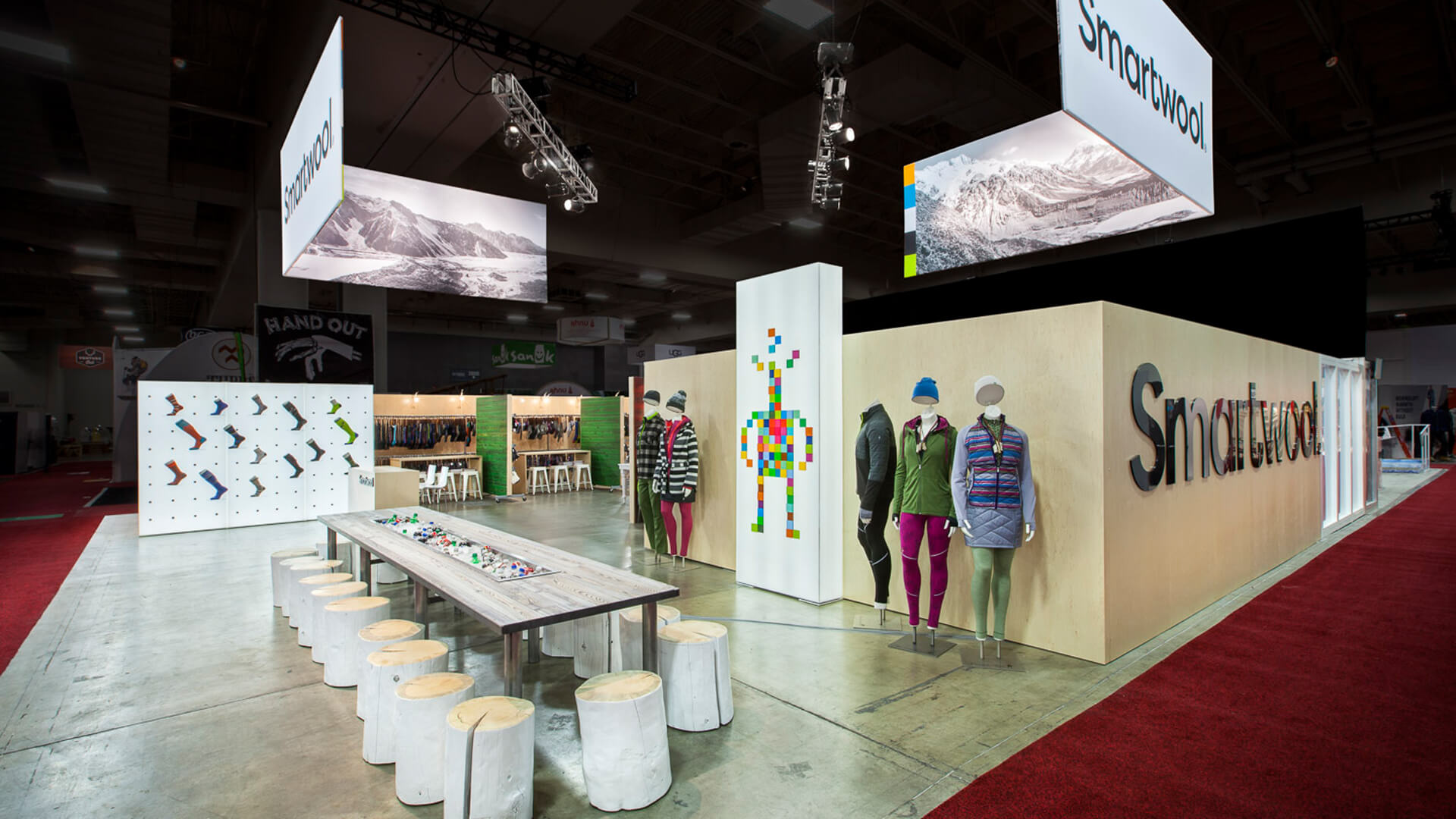
exhibits, installations, and event case studies
Take a deep dive into some of our favorite trade show booths and design projects.
Get concrete examples of our process from ideation to completion with all sorts of spectacular clients.
We’re pleased to showcase a wide variety of design case studies for different events, exhibit types, spaces, and industries.
You can also check out some eye candy on our Portfolio page. So intrigued you want one of your own? Starting a project takes one click.
Expert Metal Fabrication for a Custom AWS re:Invent Exhibit
TmaxTibero, a leading database management system company based in Korea, exhibited internationally for the first time at AWS re:Invent with a 20×20 island exhibit designed and fabricated by Condit.
Color-Matching Your Tradeshow Exhibit Graphics
RLDatix new exhibit design and build included broad swaths of color, full-wall graphics, and tailored event messaging that showcased the skills of Condit’s in-house graphics department in color-matching, print clarity, material selection, and more.
Repurposing Tradeshow Exhibit Components
With Condit’s help, Cochlear repurposed several components of their tradeshow exhibit properties in a corporate installation at their headquarters in Lone Tree, Colorado.
Executing Exhibit Form & Function for The Inspired Home Show
Simple Modern, manufacturer of chic stainless steel insulated water bottles, tumblers, and other storage solutions, sought a timeless and elevated custom housewares exhibit that they could manage from show to show.
Corporate Innovation Display for Gogo Business Aviation
Gogo Business Aviation, industry leader in inflight connectivity and entertainment solutions, collaborated with Condit to build their Innovation Corridor.
Tradeshow Booth Storage & Maintenance – Inside Look
Condit’s dedicated warehouse team services and stores custom exhibits before and after client tradeshows and other events. This is accomplished through a three-step procedure: master inventory, maintenance & inspection, and storage.
Custom CES Rental Exhibit For Energous
Energous, a global leader in Wireless Power Networks, partnered with Condit Exhibits to create their first floor exhibit at the Consumer Electronics Show (CES).
Craft Brewers Conference: Flexible Exhibit Solutions
We are proud to have years of success at the Craft Brewers Conference, including servicing local favorites like Coors as well durable-goods brands like BruMate. Take a look at projects for three new clients!
High-End Architectural Millwork for the Rally Hotel
Condit collaborated with Edge Construction Specialties on a high-end architectural millwork project at the Rally Hotel in McGregor Square, an entertainment complex located in downtown Denver.
The Coore and Crenshaw Wing at the Colorado Golf Club
Condit was honored to contribute to the Colorado Golf Club’s latest project, the Coore & Crenshaw Wing of the Clubhouse.
Experiential Client Event for Uplight
Uplight collaborated with Condit on their first conference and unique client event – Customer2030. See inside the design and learn more about their amazing results!
Exhibiting in the US as an International Brand | Contamac
Together, Condit and Contamac have designed and built multiple, standout exhibitions for US events that not only foster connections with clients, prospects, vendors and even competitors but also help Contamac stay tapped into the US market at must-attend, in-person functions – all while adhering to their event marketing budget.
ASCO: Experiential Marketing and Interactive Exhibits
For ASCO 2019, Array sought to drive traffic to their booth, despite suboptimal location on the show floor, by harnessing advanced technology and interactive elements.
How to Measure Trade Show ROI – A Case Study
Exhibiting at a trade show, a convention, an expo or other event is often expensive. Here are 5 quick and easy metrics to determine success.
Smaller Tradeshow Booths: Make the Most of a 10×10 and 10×20 Footprint
Some of the most commonly assigned booth dimensions on the tradeshow floor are the 10×10 and 10×20 inline spaces – take a look at 5 Condit projects that show size really doesn’t matter!
Rental Exhibits for Wowza Media Systems
Condit Exhibits has been partnered with Wowza for nearly five years, collaborating on numerous rental projects and visually narrating Wowza’s impressive growth from a fresh startup to a major global player.
Permanent Museum Exhibit at the Museum of Boulder
This new permanent museum exhibit encompasses over 160 years of Boulder history, beginning in the pioneer era and spanning through modern space exploration.
Array BioPharma’s New Custom Exhibit at ASCO 2018
The design goal for the Array BioPharma exhibit was to create a striking space that would emphasize the company’s growing presence, resources, and commitment to patients.
Jones Dairy Farm’s Modular Exhibit for Natural Products Expos
A modern farmhouse design with intelligent functionality
Temporary Hospitality Structure at The College Football Championships
An event that called for a space far more extraordinary than a typical tent
Fresh Gourmet’s New Custom Food Exhibit for the PMA Fresh Summit
A beautiful mix of rustic and modern make this new food exhibit a spectacle. Read on for the full case study.
Sorella Apothecary’s New Custom Exhibit for IECSC Shows
A collaborative project that results in a timeless design. This case study details the new Sorella Apothecary exhibit at IECSC shows.
YETI Coolers’ Custom Exhibit for Outdoor Retailer Shows
Condit put hammer to nails to complete the exhibit fabrication for YETI Coolers’ new custom trade show exhibit.
Clovis Oncology’s New Exhibit at ASCO
Clovis Oncology called on Condit to build a new custom/rental trade show exhibit for the 2016 American Society of Clinical Oncology Show.
Perfect Bar’s New Custom Exhibit
We got lucky enough to collaborate with a company whose story is much richer than the average brand
Smartwool’s New Exhibit Design
We partnered with longtime client, Smartwool, to build a new custom trade show exhibit for the 2016 Outdoor Retailer Winter Market
Root 9B’s Corporate Installation
This futuristic permanent LED light installation zapped instant new interest in the Root9B corporate headquarter’s operation room.
ABeam’s Custom Trade Show Booth
Condit was tasked with bringing this brand theme and values to life in three dimensions. This new client shares their exhibiting success story and how their custom built booth was unlike any other at the show.
Xfinity Think Tank
The goal of this project was to create a temporary, stand-alone marketing space with functioning amenities on par with that of a permanent building. Maximum visibility was also key, making site selection and branding high priority.
subscribe to our condit courier newsletter
- Consent *This form collects your name and email so we can contact you about your inquiry. We’ll always treat your personal details with the utmost care and will never sell them to other companies for marketing purposes.
- Phone This field is for validation purposes and should be left unchanged.

Generating 3.53x Return on Ad Spend for an Event Company
Discover how llama lead gen used facebook, instagram, and linkedin to drive 155 attributed registrations (a $92,845 value) for a financial expo..

In June 2022, Fixated Events hosted an event called Limitless, Financial Freedom Expo in Scottsdale, Arizona. The event provides attendees the opportunity to learn from today’s top experts in business, economics, real estate, and finance so they can move forward on the path of financial freedom with confidence.
Through means of paid advertising on LinkedIn, Facebook, and Instagram, Llama Lead Gen created top-to-bottom campaign funnels to promote and drive registrations for the Expo. Numerous types of content and ad placements were implemented throughout the duration of the campaign.
#eventsmarketing
#eventcasestudy
#facebookads
#linkedinads
Campaigns were launched on Facebook, Instagram, and LinkedIn. Each platform helped promote the messaging to its distinct audience. There were however clear winners when analyzing performance and effectiveness across similar audiences and reporting metrics, giving each media platform its strong and weak points. Overall, Facebook obtained more total Registrations, but LinkedIn converted attendees at a lower average cost.

Strategy & Goal
The primary goal was to drive users to Fixated's website, then convert Registrations for the Limitless Expo. The tactic revolved around paid social advertising on Facebook, Instagram, and LinkedIn.
The total budget finished at ~$26,000 during the two-and-a-half-month campaign flight. Our assets included content provided by the Fixated team which LLG implemented with several variations to A/B test within each funnel step.
Following Registrations, our secondary KPIs (success metrics) included: Clicks, Views, Site Sessions, and Cost-per-Lead.
Registration Funnel

Campaign Flights
Top of Funnel (TOFU)
Engagement - Event Response
Campaign to promote the Expo. Allowed users to view & sign up for the LinkedIn event. Built an audience to retarget later in the funnel.

Middle of Funnel (MOFU)
Consideration - Message
Conversation ads were promoted on LinkedIn which delivered messages to the target audience's inbox. Chat-flow was setup allowing users to learn then Register.

Bottom of Funnel (BOFU)
Lead Gen - Images
Finally, a retargeting audience was used to drive Registrations from users who showed interest for the event earlier in the funnel.
Facebook, instagram
Awareness - Videos
Campaign to promote the Expo. Used videos to create awareness and build an audience to retarget later in the funnel.
Campaign to promote the Expo. Allowed users to view & sign up for the Facebook event. Built upon the Awareness audience to continue retargeting later in the funnel.
Lead Gen - Carousel/Images
Like LinkedIn, a retargeting audience was used to drive Registrations from users who showed interest for the event earlier in the funnel.
Campaign Targeting
Select geographic targeting strategies were used to get our ads in front of the most appropriate audiences. In addition to event-specific demographic targeting, we implemented ABM lists to discover audiences of similar demographics.
Overall, the platform targeting contributed to a majority of the ad spend and results. However, the Lookalike audiences were also impactful to the final results of the campaign.
Creative Types
Socially optimized videos between 0:06 - 1:00 were utilized to create awareness and build an audience in our top-of-funnel

Engagement creatives, which allowed users to provide Event Responses on Facebook and LinkedIn, were implemented within the middle-of-funnel

conversation
Conversation ads were promoted on LinkedIn which delivered messages to the target audience's inbox

Finally, bottom-of-funnel lead generation ads were shown to the retargeting audiences with the objective of converting Registrations

We discovered early on that the event's biggest name speaker, Robert Kiyosaki, and his wife Kim, were proving to be the highest performing asset for our ad creatives.
The ads which promoted these two, lead the way for Total Engagement and Event Registrations

Users were most influenced by the ads which presented "Rich Dad Poor Dad" author, Robert Kiyosaki
Creative insights, highest performing creatives.

V1 0:38 - Ad #1
Amount Spent - $438
Impressions - 23,178
Reach - 15,108
ThruPlays - 8,884

Interests Targeting - Ad #11
Amount Spent - $751
Link Clicks - 99
Event Responses - 69
Cost Per Response - $11

LI Conversation - Ad #3 (Offer)
Amount Spent - $474
Clicks - 832
Completed Registrations - 6
Cost Per Registration - $79

Price Bump Reminder - Ad #04 (DontMiss)
Amount Spent - $3,970
Clicks - 3,029
Completed Registrations - 34
Cost Per Registration - $116
Performance
Facebook/Instagram
Registrations
As expected, the BOFU campaigns obtained the most Registrations. Followed by MOFU and then TOFU (omitting the Maricopa County campaign).
Like total Spend, Facebook achieved about two-thirds of the Registrations. 155 Registrations were attributed between the platforms.

Registration Rate
The Registration Rate was significantly higher with the LinkedIn BOFU campaigns.
This contributed to LinkedIn having a lower Cost-per-Registration and higher ROAS than Facebook.
Registration Value
The Registration Value largely followed the levels of the funnel, increasing in Value from top to bottom.
Facebook had the greater total Value, but LinkedIn's was higher when comparing to Amount Spent.
Amount Spent

Return On Ad Spend (ROAS)
Overall the Return on Ad Spend was excellent. As expected our largest returns came from the bottom of the funnel.
The LinkedIn "Website Conversion" campaign was almost twice as high as all other campaigns.
What Worked Well
LinkedIn achieved a higher Registration Rate, lower Cost Per Registration, and higher ROAS. Facebook obtained about two-thirds of the Registrations.
Both platforms had a Click-thru-Rate above industry standards. LinkedIn had an outstanding average Rate of over 2%.
LinkedIn and Facebook each had a positive ROAS over ~4X and ~3X respectively.
The BOFU "Pricing Discount" campaign achieved the highest amount of Registrations on both platforms.
After all campaigns were completed, we had a total spend of $26,305 and achieved 155 attributed Registrations at an average cost of $170 and a total value of $92,845.
Lifetime Metrics
Impressions.
Click-Through Rate
Cost-Per-Click
Attributed Registrations
Total Registrations
Return On Ad Spend

Ready to take your events marketing efforts to the next level?
Struggling to effectively and efficiently budget for your advertising campaigns? Save time, money, and resources by hiring Llama Lead Gen as your digital marketing expert.
Explore our other case studies

Site Visitors for Largest Digital Marketing Campaigns in History
See Case Study

Increase in Year-Over-Year Organic Traffic for Our Website

Conversion Rate for Ad Council LinkedIn Campaign

Qualified Leads Generated for a B2B SaaS Company
Event Marketing Case Study
Event Marketing: How To Successfully Promote An Event On Social Media?
Every day, we come across so many events and the reason they’re successful is because event planners expertly create successful and effective event strategies. How well the event does completely depend on planning and execution. The importance of event marketing lies in its milestones and goals to be kept in mind and work backward from there. Event marketing case study gives us an insight into what’s happening at the backend of things.
Marketing for an event can be a tedious process and requires spot-on execution. Planners constantly have to find creative ways to promote an event to stand out.
Creative ways of promoting an event online too require the same amount of preparation. Over December of 2018, we had the chance of working with one of the major players in the clothing sector in the city. When the owners told us their vision for the event, we were immediately up for the task. Read more on our event marketing case study:
The BigDeal Store:
The BigDeal Store offers a wide range of handpicked branded clothes for men and women at affordable prices. This is a surplus store, which has one outlet in Ayanavaram and one in TNagar, Chennai.
- To increase brand awareness of The BigDeal Store for their December Shopping Festival.
- Reach a large audience and entice them to visit the store during the event dates.
- To conduct a successful event using the latest online marketing trends.
Plan Of Action:
- Targeting audiences interested in shopping, following particular brands and fashion lovers.
- SEO tools to analyse potential audience.
- Structured keyword planning to eliminate fray audience.
- Created a marketing funnel to narrow down from a wider audience.
- Instagram and Instagram stories were used to create a brand presence in the target locations and bring in interactions from the customers.
- YouTube ads were used to create awareness to bring in new visitors. Flooded the audience with bumper ads(6 Sec Non Skippable Youtube Ads) as a shout out.
- Influencer marketing was used at the event to spread the brand’s name, showcase the products on their channels and give their opinion on the store.
- Search network ads played a strong part in funnelling in customers showing intent.
- Offer ads were used to retarget customers. Deals and discounts were also given.
- The festival was heavily pushed on all social media channels and we made sure the message for consistent overall.
- Offers were given and contests were held to lure in the section of the audience that was greatly interested.
- A substantial increase in followers on the social media pages.
- Created a buzz about the store as the countdown began.
- The offers worked out well, especially with serious shoppers.
- Increased turn out than estimated.
- Shoppers participating in contests.
- In an interesting turn of events, a particular t-shirt worn by an influencer sold 60 pieces at that very event, making it a huge hit.
Social Media Campaigns & Contests:
1. Offers, Contests and Discounts:
3. Website:
4. Influencer Marketing:
At Let’s Goo Social, we try to bring out the most at the least cost. Our event marketing case studies focus on showing the result in the simplest terms so as a potential client you would know an example of the plan of action we would take. LGS is one of the few event promotion companies in Chennai. A digital marketing agency in Chennai with the vision to give only the best, each time.
To market your event the right way, go digital today with Let’s Goo Social!
Captcha: (8+2)?
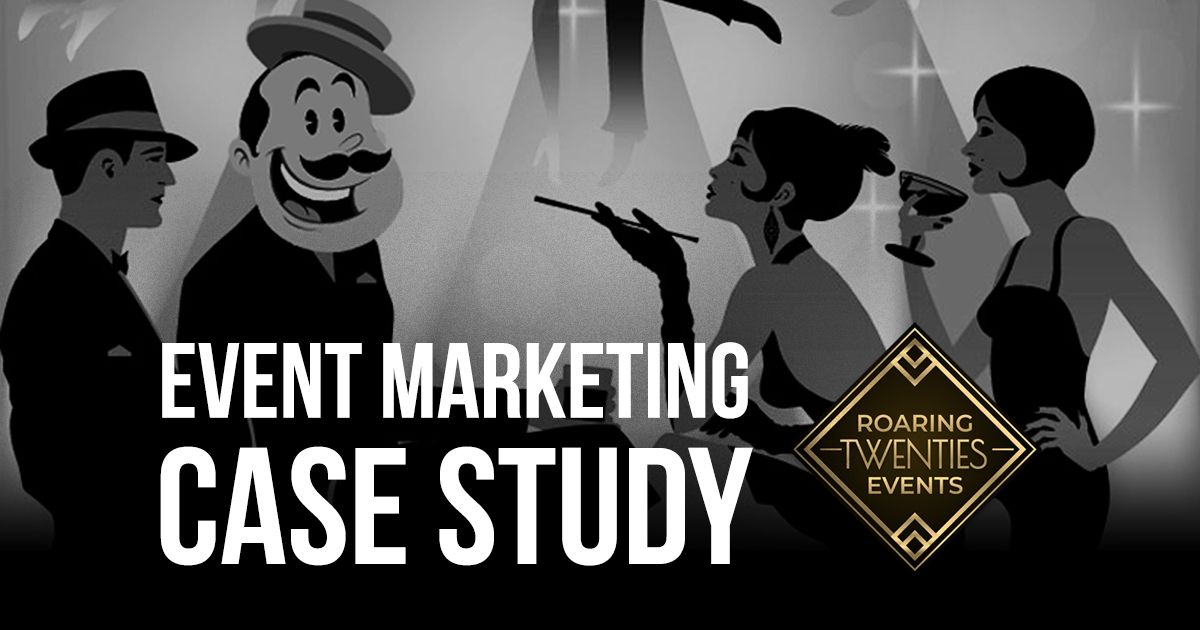
Event Marketing Case Study: Roaring Twenties Events
Todd Foster March 20, 2024
Event Marketing
Case Study: Building an event brand from the ground up and achieving a sell out audience.
Long before I launched Barker Social, I was a niche event organizer on the side. Organizing great events is passion project of mine. I have years of experience hosting and marketing events in Toronto, New York City, and the Niagara Region. This was a big part of how I transitioned from running events in the King & Bay corporate world to working as a full-time marketer, as running an event is at least 50% marketing. This is true of most businesses—50% marketing and 50% business-specific operations.
And so, with a passion for all things vintage and the approach of 2020, I applied everything I know to create Roaring Twenties Events :
Roaring Twenties Events is celebrating the Roaring Twenties in 2020 in Toronto with a series of exuberant, freewheeling, wild retro parties and 1920s-themed immersive experiences.
Using everything I knew as a professional marketer, in under 9 months, I sold-out my first event with a long waiting list, with many more events still to come! Here are some insights into how I did it.
Your Branding Matters
From day one, I knew that having a fully-realized brand image was going to be key for winning over and creating a lasting relationship with my audience. I invested the time and money into doing it right, engaging my graphic designers to establish brand assets that went beyond just a logo and a few images. We also paid for a good amount of stock imagery to support the brand.
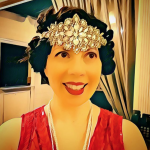
Personal branding also played a big part in the success of the brand’s first event. Rather than just appearing as an unknown, mysterious entity, I felt it was important from the get-go to make myself and my husband known to our audience. Since this is a niche brand, our personal enthusiasm for the theme has added to the feeling of trust and interest that we’ve built with our audience.
Tickets for the January 18th event go on sale Tuesday, October 1st! Here's some more information about the event from organizer Mandi Gould. #roaring20sTO Posted by Roaring Twenties Events – Toronto on Friday, September 27, 2019
Facebook is Key
Your target audience demographic is crucial. For my event and brand, Facebook has been key. Creating a Facebook Event very early on with “Save the Date” graphics was critical to our success. This method is a free way to start to get the word out about your event. As soon as people start to mark themselves as “interested” in the event, their friends in their network also start to get notifications in their newsfeed about the event, which helps spread the word at no charge. The event page then becomes a vehicle to stay in touch with interested people, keep them updated, and to push ticket sales.
One lesson that’s hard for very small business owners to learn is that you have to spend money to make money. Early on, I ran the Facebook Event as an ad with a budget of just $100, but targeted very strategically to create the right interest and buzz about the event. This contributed to the very early distribution of the event in newsfeeds, which carried beyond the $100 budget, as people continued to mark themselves as “interested” and also interacted with the content on the wall of the event.
As soon as the brand and Event pages were created, I began to post interesting on-brand updates regularly. This wasn’t necessarily news about the event; it was often content related to the brand niche that would keep people interested and engaged without actually trying to sell them anything (yet). This helped drive brand awareness and establish the brand in people’s minds.
By the way, going live on Facebook during the event is also a great way to gain interest for your next event!
The Charleston Contest Live video of the Charleston Contest! Winner takes all with a prize of a pair of Saint Savoy shoes! Posted by Roaring Twenties Events – Toronto on Saturday, January 18, 2020
Exclusive Newsletter Perks
From very early on, I also made it clear that there would be perks to signing up for the brand’s newsletter. The main perk is that I always offer pre-sale tickets to my subscribers before public tickets go on sale. This makes the most loyal fans excited and eager to buy tickets during the pre-sale window. With such a method, once you do put the public tickets on sale after a defined date, you already have momentum with sales.
For my next event, I included advance ticket perks for both subscribers _and_ previous ticket holders. As a result, I was able to sell 40% of my tickets before public ticket sales were even opened!
To create further awareness of the event, I ran a small contest and gave away a pair of tickets to the winner. This also drove people to follow us on social media and sign up for the newsletter, which helped strengthen the brand’s connection with its audience.
When it was time for the public tickets to go on sale, I didn’t make this announcement merely by boosting posts. Rather, I used the much more sophisticated Ads Manager to run ads on Facebook and Instagram. I chose this route as when it comes to marketing to my audience, Facebook has proven more useful than Instagram or Twitter. However, the platform that works best for you will depend on your target demographic.
When selling tickets, the goal is to drive people to your website’s ticket page or landing page where you’re not just selling the tickets but _also_ tracking with the Facebook pixel. With the Facebook pixel, you’re able to retarget people who have expressed interest in the event but haven’t pulled the trigger on buying just yet. That’s how you turn more warm leads into buyers!
An Event Hashtag Is an Absolute Must
Any time I mentioned the event or anything to do with the brand, I pushed my event hashtag: #roaring20sTO . It’s a unique hashtag with the “TO” (Toronto) at the end, since on its own, #roaring20s is far too global and not useful for tracking. It’s also as easy-to-remember as I could make it without the hashtag being completely global and over-used.
The hashtag became most useful once the first event was underway and later, for follow-up marketing. People used the tag their posts and photos, which has helped act as free publicity for the brand and for my next events. Here you can also see the free hashtag Wall I’ve created for the event and the code can be embedded on any website:
Instagram is Also Important
**Just about any good event marketing strategy includes Facebook, but you shouldn’t forget about the other social media platforms. Though my demographic has a much smaller following on Instagram, it’s been a great place to connect with some of the most avid social media users. It also works great as a showcase for event branding and photography.
Twitter has been less important for this brand, but that may change when I run events that are more jazz music-oriented, since there is a very active #TorontoJazz community on Twitter.
View this post on Instagram SAVE THE DATE!⠀ ⠀ Get ready to party like the 1920s in the 2020s, starting with a Roaring Twenties Party (Welcome to the 20s!) on Saturday, January 18th!!! ⠀ ⠀ In the spring, the Great Gatsby Spring Revelry will follow in April. ⠀ ⠀ A new decade is just around the corner and we're preparing a series of exuberant, freewheeling, wild retro parties to celebrate—art deco style. Join us for these 1920s immersive experiences with cocktails, flappers, hot jazz, cool speakeasies, and bathtub gin.⠀ ⠀ Follow the link in the bio to join the Facebook event!⠀ ⠀ #roaring20sTO #Toronto #TorontoEvents #Party #RoaringTwenties #1920s #GatsbyGardenParty #GreatGatsby #the6ix #RoaringGoodTime #LetsGetRoaring #JamFactory #JamFactoryTO #SavetheDate #Cocktails #TorontoParty A post shared by roaring20sTO (@roaring20sto) on Jun 23, 2019 at 4:42am PDT
Print & Other Paid Ads
While I did have some print materials made for the event, I did not find them to be useful and likely won’t use this marketing strategy for the brand’s events again. The event sold out before I even had a chance to give out most of the cards I had printed! In the future, I may have just a few cards printed again, but if so, I’ll make them generic to the brand without any information about specific events.
Photography & Video
Having a professional photographer and videographer on-site at my brand’s first event has proven essential for marketing my next events.
The great photos and videos shot created a foundation of “real life” brand assets that are making my brand more real and tangible than I was able to achieve through my original stock imagery. While those stock images were important at the brand’s inception, I now have a much more robust base of brand assets that will be key for future event marketing.
https://www.instagram.com/p/B7geq1plCQs/
A Professional Toronto Event Marketing Agency Makes All the Difference
As you can see, marketing an event is a huge undertaking and takes a lot of work and commitment. When it comes to marketing events, it’s something I’m clearly intimately familiar with and also passionate about. Consider making me and my talent part of your event dream team! We have years of experience organizing and marketing events with a proven track record for success. I’d love to hear about your event, so contact me today and let’s chat about it!
event marketing

Todd Foster
Search our blog, related articles.
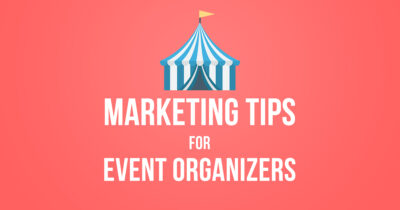
Marketing Tips for Event Organizers

How to Market your Toronto Event
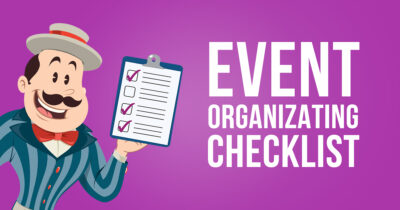
Event Organizing Checklist for Event Planners
See how Cvent can solve your biggest event challenges. Watch a 30-minute demo.
FEATURED CUSTOMER SUCCESS STORIES
Hei hotels & resorts.
Simplifying room blocks and increasing revenue
See case study
Thousands of organizations rely on Cvent
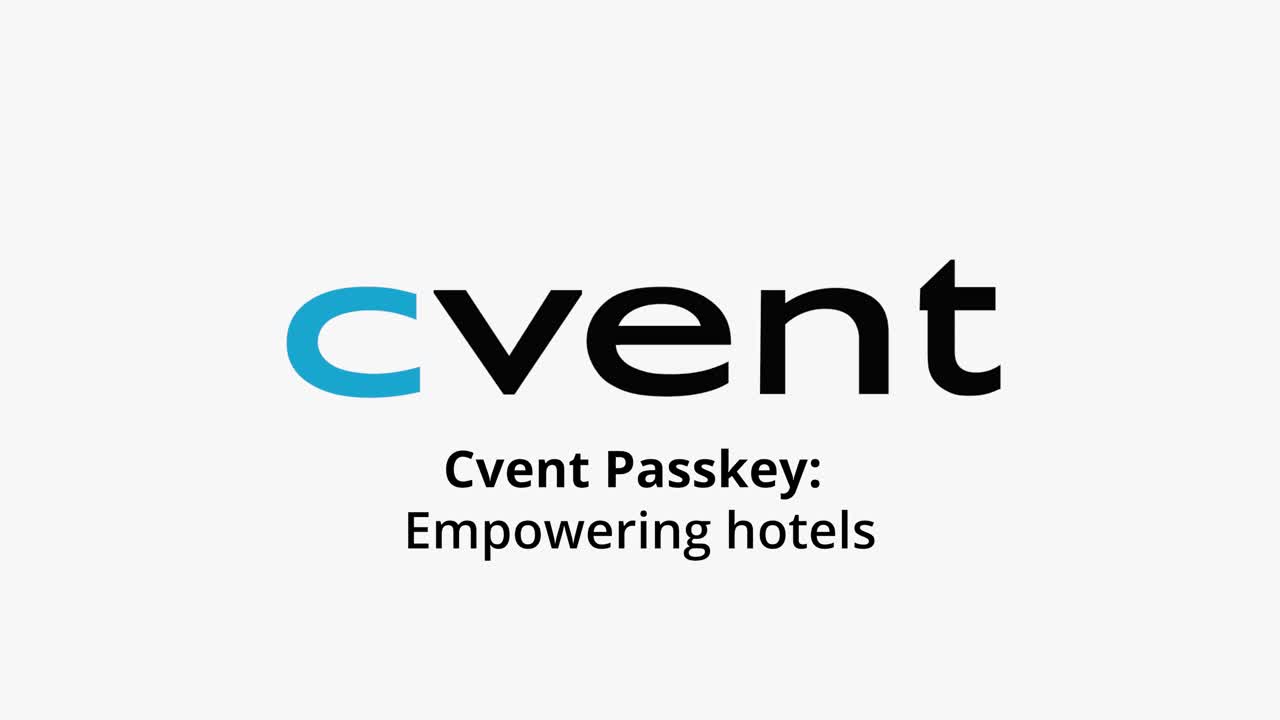
Boost visibility, bringing in more group business, and educating the workforce
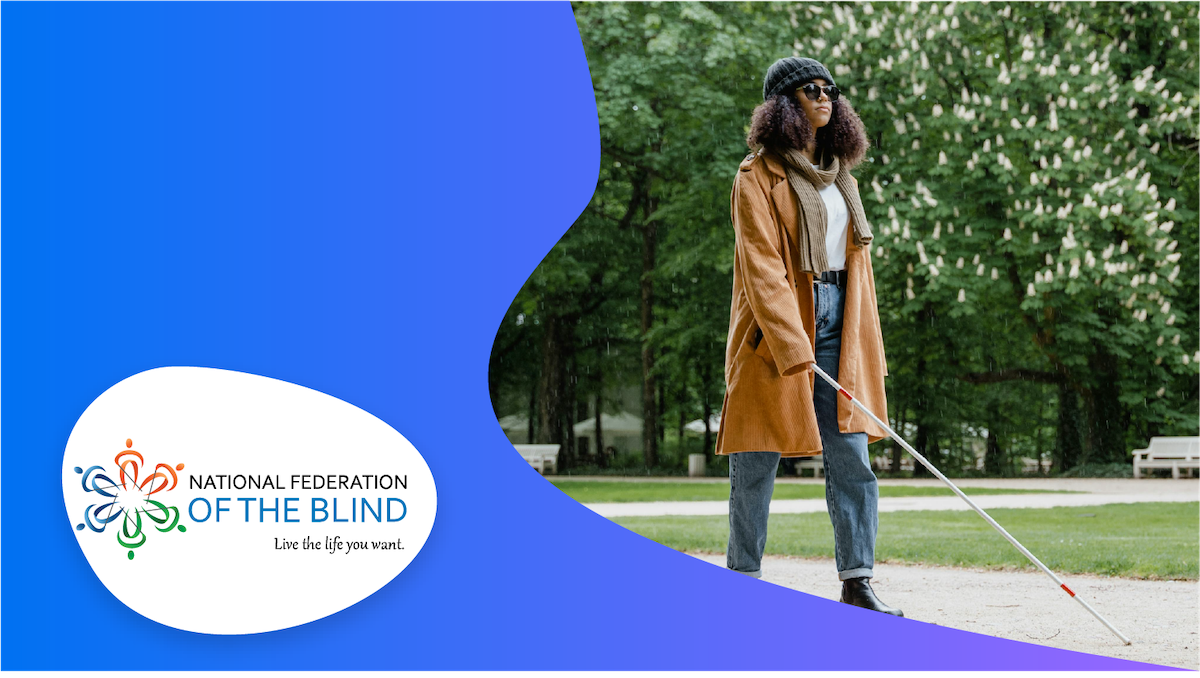

Creating accessible events for all attendees using Cvent solutions

Driving efficient global event program growth at Neuberger Berman

Delivering data-driven event program success across Capital Group
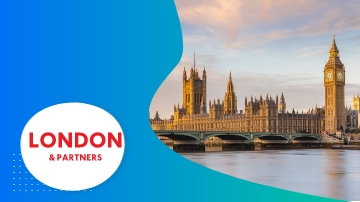
London uses Cvent technology to boost the economy
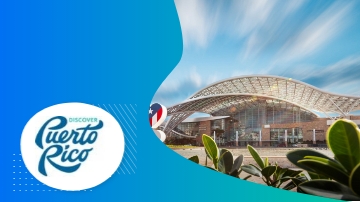
Attracting new group business to a tropical destination
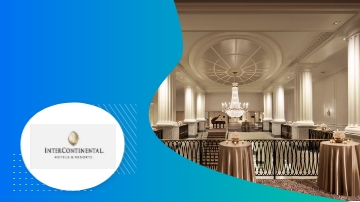
A luxury experience with customer-centric technology
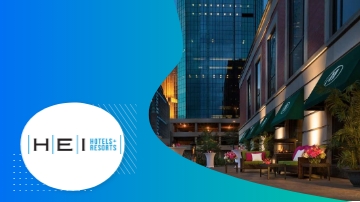
Simplifying room blocks and adding revenue

How AIG is optimizing meetings management to reduce costs and scale efficiencies

Share your Cvent success story
If you’ve had a great virtual, hybrid, or in-person event powered by Cvent solutions, we want to share your success!
Showcase your achievements

Honoring the best in the industry
The Cvent Excellence Awards celebrate customers from across the globe who are driving innovation in the meetings and events industry.
Learn about Cvent's Excellence Awards
Event Marketing: How to Successfully Promote Events, Festivals, Conventions, and Expositions, Second Edition by C. A. Preston
Get full access to Event Marketing: How to Successfully Promote Events, Festivals, Conventions, and Expositions, Second Edition and 60K+ other titles, with a free 10-day trial of O'Reilly.
There are also live events, courses curated by job role, and more.
Event Marketing Case Studies
In this chapter, we will examine successful examples of event marketing including
- IMEX and EIBTM
- Malcom Forbes' Birthday Event
- The Olympic Games
- Sports Illustrated Magazine
- The Gap and (Product) RED
- Virgin Galactic
- The Professional Convention Management Association
- The NFL Fan Fest
- The Fjällräven Classic
- The Jewish Museum
- The Edinburgh Experience
To conclude our exploration of strategic event marketing, it will be useful to look at some case studies that demonstrate valuable examples of event marketing in action. We will begin with a case of two competitors in a specific and specialist sector of the events industry that manage to coexist through positioning.
IMEX Versus EIBTM International Business Tourism Trade Show
The EIBTM is the exhibition for “Incentive Business Travel and Meetings” that is held every year in Barcelona, Spain, in late November or early December. EIBTM claims to be “the leading global event for the meetings and events industry.” EIBTM is produced by Reed Travel Exhibitions, which also organizes sister events of EIBTM in the Americas, China, Australia, and the Gulf region, as well as many smaller tourism industry events.
IMEX is the International Meetings Exhibition that is held every year in Frankfurt am Main, Germany, and more recently in the United States. IMEX America is held in October, IMEX Frankfurt in May. IMEX sees itself as “the essential worldwide exhibition for meetings and incentive ...
Get Event Marketing: How to Successfully Promote Events, Festivals, Conventions, and Expositions, Second Edition now with the O’Reilly learning platform.
O’Reilly members experience books, live events, courses curated by job role, and more from O’Reilly and nearly 200 top publishers.
Don’t leave empty-handed
Get Mark Richards’s Software Architecture Patterns ebook to better understand how to design components—and how they should interact.
It’s yours, free.

Check it out now on O’Reilly
Dive in for free with a 10-day trial of the O’Reilly learning platform—then explore all the other resources our members count on to build skills and solve problems every day.

🚀 The Event Playbook: Proven strategies to level up your next event!
Download for Free
- Virtual Events
- Hybrid Events
- Video Production
- Event Marketing
- Case Studies

Maximizing Brand Engagement: Your Guide to Branded Events
- Event Planning
- Published: June 26, 2023
Understanding Branded Events and Their Role in Marketing
Branded events are meticulously curated, immersive experiences that embody a brand and enable customers to engage with it in a memorable and tangible way.
Whether it’s a product launch, a company anniversary celebration, or an experiential marketing campaign, a branded event gives your brand identity a tangible form.
In the arena of marketing, branded events play a pivotal role. They provide the perfect platform that bridges the gap between businesses and consumers by fostering a unique, personalized connection.
When done right, they can revolutionize how brands communicate with their audience, shifting from one-way monologues to engaging, interactive dialogues.
The Role of Brand Identity
At the heart of any business’s marketing strategy lies its brand identity—those unique traits, ethos, and visual cues that set it apart from the competition.
Your brand identity is more than just a logo or a tagline; it’s a compelling narrative that encapsulates your mission and values, striking a chord with your customers.
It’s the secret sauce that fosters familiarity and trust among potential customers, fueling loyalty and repeat patronage. Essentially, your brand identity is your company’s “personality” , making it relatable and engaging for your target audience.
Crafting a successful branded event requires meticulous planning and execution, underpinned by a deep understanding of your brand’s identity and target audience.
The process involves conceptualizing the event theme and design and creating compelling branded content , which serves as the golden thread that weaves together all event elements.
It serves to inform and entertain and reinforce the brand’s narrative throughout the event to maximize brand engagement and recall.
In short, branded events intersect marketing, your brand identity, and your branded content.
Together, they function as creative representations of your brand’s persona and offer a unique opportunity to engage with customers on a more personal and emotional level.
The Power of Branded Events in Amplifying Brand Identity
Weaving your brand’s colors, logos, and themes into every facet of the event, does more than just create the setting of your event.
It creates the atmosphere that will set the tone of people’s perception of your brand, allowing attendees to connect with it in a tangible way.
Think: at the end of your event, the narratives, experiences, and emotions that will have emerged from it would have become tied to your brand, ultimately expanding your identity .
A Catalyst for Brand Awareness

This goes for every interaction, every shared memory from your branded event. The importance of the latter could not be emphasized enough.
In the age of social media, attendees’ tendency to share their experiences online means that branded events often impact far beyond their physical or virtual boundaries.
When these experiences are shared on digital platforms, they resonate with a broader audience , amplifying your brand’s reach and awareness.
This is why fully leveraging branded events and strategically maximizing brand awareness should be your priority number one.
The following, which will be discussed later in further examples, are a couple of such well-established strategies:
- Incorporating your brand elements in event design
- Offering unique branded merchandise
- Employing experiential marketing techniques that engage attendees and encourage sharing
- Harnessing the power of social media
- Creating event-specific hashtags
- Running live-streams
Remember that each interaction should be designed to elicit emotions and create memorable experiences .
When attendees associate their favorable experiences with your brand, they’re more likely to share them, sparking conversations and creating a buzz that further propels brand awareness.
How to Create Successful Branded Events: Strategies and Tips
But all of it is easier said than done.
Crafting a well-executed branded event is much like orchestrating a symphony. And there’s no one way to do it.
It depends ultimately on your brand; what are you about? What do you offer? What do you want to accomplish?
Once you know the answers to these questions, what comes next is meticulous planning, organization, and a dash of creativity.
Every detail, from the event’s theme to its speakers, should echo the brand’s identity and message, creating a symphony of experiences that leaves an unforgettable impression on your audience.
Below are some of the aspects that you need to pay attention to:
Theme Selection

Selecting a theme that mirrors your brand identity is the initial step in fabricating a cohesive event.
This theme should mirror your brand’s ethos and aesthetic and personify its character .
For instance, a tech company might choose a futuristic theme for its product launch . At the same time, a fashion brand might lean towards a glamorous, runway-inspired theme for its annual gathering.
Logo Integration

Think of your logo as the visual autograph of your brand .
Incorporating it into your event branding should be executed in a manner that feels organic and unforced. Consider it is subtly stitching your brand’s signature into the event’s tapestry.
For instance, Nike’s Innovation Summit in 2016 saw the brand’s logo morphed into a colossal LED screen, creating a visually arresting and unforgettable installation.
Interactive Elements

Interactive elements are the life force of any branded event. They act as the conduit between the brand and its audience, fostering engagement and crafting memorable experiences.
These can range from interactive product demonstrations to hands-on workshops and networking opportunities.
For instance, Adobe’s MAX Creativity Conference in 2019 featured an interactive installation of vibrant cubes that attendees could manipulate, creating a dynamic and enjoyable experience.
Branded Merchandise

Offering branded merchandise as keepsakes is an effective strategy to prolong your brand’s presence beyond the event.
These tangible reminders serve as souvenirs of the experience, further bolstering brand recognition.
Spotify’s press event in 2018, for instance, featured a pop-up store where attendees could purchase Spotify-branded clothing and accessories, creating a personalized and memorable experience.
Easy starting packages • Advanced options • Proven results
Elevating the Branded Event Experience Through Tech
If you’ve done anything event-related in 2023, you understand that technology is no longer a mere accessory when it comes to events—it’s the star of the show.
It’s the magic wand that transforms ordinary events into extraordinary, immersive experiences.
From the novelty of virtual reality and artificial intelligence to the ubiquity of live streaming and mobile event apps, technology can revolutionize operations, create immersive experiences, and yield invaluable data for post-event analysis.
Here are several ways to help you ride the wave of technology and elevate your branded events:
1. Immersing Attendees in Virtual Reality (VR)

VR immerses your audience in your brand narrative, and lets them experience your products in new ways.
Take Volvo, for example. At the Volvo Reality event in 2014 , they didn’t just talk about their new XC90 SUV—they let attendees drive it. Through a VR headset, attendees navigated the SUV through various landscapes, experiencing the vehicle’s features firsthand.
In many ways this wasn’t just a product demo—it was an adventure and a memorable experience that attendees could relive through a downloadable app.
2. Elevating the Event Experience with Mobile Apps

Mobile apps are the Swiss Army Knife of event technology, offering attendees a one-stop platform to access event information, network with other attendees, and engage with the brand. An event app could include features such as:
- A personalized agenda that curates sessions and activities based on the attendee’s interests and preferences.
- Live polling gives attendees a voice, allowing them to share their thoughts and feedback during sessions or activities.
- A social feed that broadcasts live updates from speakers, sponsors, and other attendees, fostering a sense of community and interaction.
- A gamification feature that incentivizes attendees to complete specific actions or challenges, such as visiting booths, collecting badges, or sharing content on social media.
3. Leveraging Social Media for Event Promotion

Social media is the megaphone that amplifies your event’s reach and engages a broader audience.
By creating a unique event hashtag, sharing behind-the-scenes content, and encouraging attendees to share their experiences, brands can create a ripple effect that extends far beyond the event itself.
Consider Red Bull’s Red Bull Stratos event in 2012. The event featured skydiver Felix Baumgartner breaking the sound barrier by jumping from the edge of space, was a social media sensation.
Red Bull created an event hashtag ( #livejump ), shared live updates from the event site, and streamed the jump live on YouTube, attracting millions of viewers and generating a social media tsunami.
Case Study: Organizing 2.0 and the Power of Branded Events

Branded events are not just about promoting your products or services; they are about telling your story, sharing your vision, and building a community around your brand.
They are a powerful tool for fostering trust, loyalty, and a sense of belonging among your customers, partners, and stakeholders. But in the age of COVID-19, when physical gatherings are either impossible or fraught with risks, how does one create a branded event?
This was the challenge faced by Organizing 2.0 . Every year, it brings together organizers, activists, and technologists to exchange ideas, learn new skills, and find their tribe. But the pandemic threw a wrench in the works.
Travel was banned, gatherings were restricted, and even the simplest human interactions were considered dangerous. The event organizers was faced with a tough decision: cancel the event or transition it online .

That’s when they reached out to us here at We & Goliath, and we helped them shift their event to virtual .
We worked with them to design and launch a custom website aligned with their brand’s style and vision. We handle the technical aspects of live streaming your speakers and sessions, ensuring attendees receive the best video and audio quality possible.
The results were astounding.
They had 1,683 attendees, a significant increase from the 200-300 at their previous in-person events .
They tripled their revenue thanks to the virtual format’s lower costs and higher donations, and ended up reaching a broader and more diverse audience because of the access and reach virtual events offer to attendees.
We are proud to have partnered with Organizing 2.0 and helped them create a branded event that made a real difference in these challenging times.
Future Trends in Branded Events
Because branded events today are deeply intertwined with technology, you can expect them to keep evolving as tech continues to develop.
To stay ahead of the curve, brands need to keep a pulse on the future trends in branded events and adapt accordingly.
Here are some of the trends that are poised to shape the future of branded events:
The Emergence of Eco-Friendly Branded Events

Sustainability is a growing trend in branded events, and increasingly, many companies are making concerted efforts to minimize their environmental footprint.
This can involve a variety of strategies, such as opting for eco-friendly materials for event decor , and using digital event programs instead of printed ones, and partnering with local suppliers to cut carbon emissions.
By weaving sustainability into their events, brands can underscore their commitment to environmental stewardship, enhancing their reputation and appeal among eco-conscious consumers.
Case in point is IKEA’s 2019 event, “ IKEA Festival: Let’s Make Room for Life .” This sustainable branded event featured a pop-up store displaying IKEA’s products made from recycled plastic bottles and fishing nets.
The event also offered workshops on how to upcycle old furniture and create DIY projects with sustainable materials.
The Expanding Role of Technology

From augmented reality and artificial intelligence to live streaming and mobile event apps, technology is enhancing the event experience in myriad ways.
Brands that stay abreast of these trends can create more engaging, memorable, and impactful events . For example, Moonpig’s WebAR event , which asked shoppers to collect gifts falling from the ceiling using a Christmas sack.
The game, which ran in tandem with their TV ads, started with an animation of a Christmas Moonpig and ended with an invitation for users to share a photo from the game on social media.
Participants could interact with the screen using their smartphones, creating a fun and immersive experience.
The Rise of Hybrid Events

Hybrid events , which marry in-person and virtual elements, are gaining popularity. These events offer the best of both worlds, enabling brands to reach a wider audience while still providing the immersive experience of a live event.
With the ongoing advancements in virtual event technology, the popularity of hybrid events is set to soar in the future. GFRR ‘s most recent event was a testament to this.
The event featured online and offline components, such as virtual keynotes, online sessions, and personalized meetings. The event also offered physical swag boxes and local experiences for attendees who opted for them.
We specialize in creating events that captivate audiences and leave a lasting impression, with your brand front and center. Whether it’s a virtual or hybrid event, we combine our strategic thinking, stunning designs, and innovative technology to make your brand shine.
With over 20 years of experience and a proven track record, we’ve helped clients achieve:
- 🚀 2X, 5X, and even 7X attendance compared to in-person events
- 📈 Increased ROI and revenue growth
- 💡 Enhanced collaboration, education, and fundraising
From increased ROI to enhanced collaboration and performance, we’re here to help you achieve your goals.
Choose We & Goliath and create extraordinary Branded Events that will make your brand the star of the show.
Get in touch with us today and let’s discuss how we can put your brand in the spotlight.
Words are empty without action.
We practice what we preach — and we deliver.

Need Some Advice on Hosting an Event?
Let our event experts help you decide which platform and production style are right for you, and how to attract the audience, speakers and sponsors you need to succeed.
Organizing a full-scale virtual or hybrid conference is overwhelming easy with the right team . Leave the stress to us, so you can focus on what you do best.
Together, We’re Virtually Unstoppable.
- Video Editing
Featured Services
- Event Consulting
- Production & Management
- Hybrid Event Production
- Promo Videos
- Live Visual Notetaking
- Highlight Videos
- Free Strategy Session
Featured Posts
How to host an impactful virtual conference event or summit, top 10 types of virtual events to host in 2022, virtual event innovators help non-profits pivot their events online with up to 7x attendance and 3x revenue.
© 2024 We & Goliath. All Rights Reserved.
Privacy Overview
We create iconic events that generate buzz.
Let us help you smash your engagement goals and set attendance records.
Free for a Limited Time ($500 Value)
28 Case Study Examples Every Marketer Should See
Published: March 08, 2023
Putting together a compelling case study is one of the most powerful strategies for showcasing your product and attracting future customers. But it's not easy to create case studies that your audience can’t wait to read.

In this post, we’ll go over the definition of a case study and the best examples to inspire you.

What is a case study?
A case study is a detailed story of something your company did. It includes a beginning — often discussing a conflict, an explanation of what happened next, and a resolution that explains how the company solved or improved on something.
A case study proves how your product has helped other companies by demonstrating real-life results. Not only that, but marketing case studies with solutions typically contain quotes from the customer. This means that they’re not just ads where you praise your own product. Rather, other companies are praising your company — and there’s no stronger marketing material than a verbal recommendation or testimonial. A great case study is also filled with research and stats to back up points made about a project's results.
There are myriad ways to use case studies in your marketing strategy . From featuring them on your website to including them in a sales presentation, a case study is a strong, persuasive tool that shows customers why they should work with you — straight from another customer. Writing one from scratch is hard, though, which is why we’ve created a collection of case study templates for you to get started.
Fill out the form below to access the free case study templates.

Free Case Study Templates
Showcase your company's success using these three free case study templates.
- Data-Driven Case Study Template
- Product-Specific Case Study Template
- General Case Study Template
You're all set!
Click this link to access this resource at any time.
There’s no better way to generate more leads than by writing case studies . But without case study examples to draw inspiration from, it can be difficult to write impactful studies that convince visitors to submit a form.
Marketing Case Study Examples
To help you create an attractive and high-converting case study, we've put together a list of some of our favorites. This list includes famous case studies in marketing, technology, and business.
These studies can show you how to frame your company offers in a way that is both meaningful and useful to your audience. So, take a look, and let these examples inspire your next brilliant case study design.
These marketing case studies with solutions show the value proposition of each product. They also show how each company benefited in both the short and long term using quantitative data. In other words, you don’t get just nice statements, like "This company helped us a lot." You see actual change within the firm through numbers and figures.
You can put your learnings into action with HubSpot's Free Case Study Templates . Available as custom designs and text-based documents, you can upload these templates to your CMS or send them to prospects as you see fit.

1. " How Handled Scaled from Zero to 121 Locations with the Help of HubSpot ," by HubSpot

What's interesting about this case study is the way it leads with the customer. That reflects a major HubSpot cornerstone, which is to always solve for the customer first. The copy leads with a brief description of why the CEO of Handled founded the company and why he thought Handled could benefit from adopting a CRM. The case study also opens up with one key data point about Handled’s success using HubSpot, namely that it grew to 121 locations.
Notice that this case study uses mixed media. Yes, there is a short video, but it's elaborated upon in the other text on the page. So while your case studies can use one or the other, don't be afraid to combine written copy with visuals to emphasize the project's success.
Key Learnings from the HubSpot Case Study Example
- Give the case study a personal touch by focusing on the CEO rather than the company itself.
- Use multimedia to engage website visitors as they read the case study.
2. " The Whole Package ," by IDEO

Here's a design company that knows how to lead with simplicity in its case studies. As soon as the visitor arrives at the page, they’re greeted with a big, bold photo and the title of the case study — which just so happens to summarize how IDEO helped its client. It summarizes the case study in three snippets: The challenge, the impact, and the outcome.
Immediately, IDEO communicates its impact — the company partnered with H&M to remove plastic from its packaging — but it doesn't stop there. As the user scrolls down, the challenge, impact, and progress are elaborated upon with comprehensive (but not overwhelming) copy that outlines what that process looked like, replete with quotes and intriguing visuals.
Key Learnings from the IDEO Case Study Example
- Split up the takeaways of your case studies into bite-sized sections.
- Always use visuals and images to enrich the case study experience, especially if it’s a comprehensive case study.
3. " Rozum Robotics intensifies its PR game with Awario ," by Awario

In this case study, Awario greets the user with a summary straight away — so if you’re feeling up to reading the entire case study, you can scan the snapshot and understand how the company serves its customers. The case study then includes jump links to several sections, such as "Company Profile," "Rozum Robotics' Pains," "Challenge," "Solution," and "Results and Improvements."
The sparse copy and prominent headings show that you don’t need a lot of elaborate information to show the value of your products and services. Like the other case study examples on this list, it includes visuals and quotes to demonstrate the effectiveness of the company’s efforts. The case study ends with a bulleted list that shows the results.
Key Learnings from the Awario Robotics Case Study Example
- Create a table of contents to make your case study easier to navigate.
- Include a bulleted list of the results you achieved for your client.
4. " Chevrolet DTU ," by Carol H. Williams

If you’ve worked with a company that’s well-known, use only the name in the title — like Carol H. Williams, one of the nation’s top advertising agencies, does here. The "DTU," stands for "Discover the Unexpected." It generates interest because you want to find out what the initials mean.
They keep your interest in this case study by using a mixture of headings, images, and videos to describe the challenges, objectives, and solutions of the project. The case study closes with a summary of the key achievements that Chevrolet’s DTU Journalism Fellows reached during the project.
Key Learnings from the Carol H. Williams Case Study Example
- If you’ve worked with a big brand before, consider only using the name in the title — just enough to pique interest.
- Use a mixture of headings and subheadings to guide users through the case study.
5. " How Fractl Earned Links from 931 Unique Domains for Porch.com in a Single Year ," by Fractl

Fractl uses both text and graphic design in their Porch.com case study to immerse the viewer in a more interesting user experience. For instance, as you scroll, you'll see the results are illustrated in an infographic-design form as well as the text itself.
Further down the page, they use icons like a heart and a circle to illustrate their pitch angles, and graphs to showcase their results. Rather than writing which publications have mentioned Porch.com during Fractl’s campaign, they incorporated the media outlets’ icons for further visual diversity.
Key Learnings from the Fractl Case Study Example
- Let pictures speak for you by incorporating graphs, logos, and icons all throughout the case study.
- Start the case study by right away stating the key results, like Fractl does, instead of putting the results all the way at the bottom.
6. " The Met ," by Fantasy

What's the best way to showcase the responsiveness and user interface of a website? Probably by diving right into it with a series of simple showcases— which is exactly what Fantasy does on their case study page for the Metropolitan Museum of Art. They keep the page simple and clean, inviting you to review their redesign of the Met’s website feature-by-feature.
Each section is simple, showing a single piece of the new website's interface so that users aren’t overwhelmed with information and can focus on what matters most.
If you're more interested in text, you can read the objective for each feature. Fantasy understands that, as a potential customer, this is all you need to know. Scrolling further, you're greeted with a simple "Contact Us" CTA.
Key Learnings from the Fantasy Case Study Example
- You don’t have to write a ton of text to create a great case study. Focus on the solution you delivered itself.
- Include a CTA at the bottom inviting visitors to contact you.
7. " Rovio: How Rovio Grew Into a Gaming Superpower ," by App Annie

If your client had a lot of positive things to say about you, take a note from App Annie’s Rovio case study and open up with a quote from your client. The case study also closes with a quote, so that the case study doesn’t seem like a promotion written by your marketing team but a story that’s taken straight from your client’s mouth. It includes a photo of a Rovio employee, too.
Another thing this example does well? It immediately includes a link to the product that Rovio used (namely, App Annie Intelligence) at the top of the case study. The case study closes with a call-to-action button prompting users to book a demo.
Key Learnings from the App Annie Case Study Example
- Feature quotes from your client at the beginning and end of the case study.
- Include a mention of the product right at the beginning and prompt users to learn more about the product.
8. " Embracing first-party data: 3 success stories from HubSpot ," by Think with Google

Google takes a different approach to text-focused case studies by choosing three different companies to highlight.
The case study is clean and easily scannable. It has sections for each company, with quotes and headers that clarify the way these three distinct stories connect. The simple format also uses colors and text that align with the Google brand.
Another differentiator is the focus on data. This case study is less than a thousand words, but it's packed with useful data points. Data-driven insights quickly and clearly show how the value of leveraging first-party data while prioritizing consumer privacy.

Key Learnings from the Think with Google Case Study Example
- A case study doesn’t need to be long or complex to be powerful.
- Clear data points are a quick and effective way to prove value.
9. " In-Depth Performance Marketing Case Study ," by Switch

Switch is an international marketing agency based in Malta that knocks it out of the park with this case study. Its biggest challenge is effectively communicating what it did for its client without ever revealing the client’s name. It also effectively keeps non-marketers in the loop by including a glossary of terms on page 4.
The PDF case study reads like a compelling research article, including titles like "In-Depth Performance Marketing Case Study," "Scenario," and "Approach," so that readers get a high-level overview of what the client needed and why they approached Switch. It also includes a different page for each strategy. For instance, if you’d only be interested in hiring Switch for optimizing your Facebook ads, you can skip to page 10 to see how they did it.
The PDF is fourteen pages long but features big fonts and plenty of white space, so viewers can easily skim it in only a few minutes.
Key Learnings from the Switch Case Study Example
- If you want to go into specialized information, include a glossary of terms so that non-specialists can easily understand.
- Close with a CTA page in your case study PDF and include contact information for prospective clients.
10. " Gila River ," by OH Partners

Let pictures speak for you, like OH Partners did in this case study. While you’ll quickly come across a heading and some text when you land on this case study page, you’ll get the bulk of the case study through examples of actual work OH Partners did for its client. You will see OH Partners’ work in a billboard, magazine, and video. This communicates to website visitors that if they work with OH Partners, their business will be visible everywhere.
And like the other case studies here, it closes with a summary of what the firm achieved for its client in an eye-catching way.
Key Learnings from the OH Partners Case Study Example
- Let the visuals speak by including examples of the actual work you did for your client — which is especially useful for branding and marketing agencies.
- Always close out with your achievements and how they impacted your client.
11. " Facing a Hater ," by Digitas

Digitas' case study page for Sprite’s #ILOVEYOUHATER campaign keeps it brief while communicating the key facts of Digitas’ work for the popular soda brand. The page opens with an impactful image of a hundred people facing a single man. It turns out, that man is the biggest "bully" in Argentina, and the people facing him are those whom he’s bullied before.
Scrolling down, it's obvious that Digitas kept Sprite at the forefront of their strategy, but more than that, they used real people as their focal point. They leveraged the Twitter API to pull data from Tweets that people had actually tweeted to find the identity of the biggest "hater" in the country. That turned out to be @AguanteElCofler, a Twitter user who has since been suspended.
Key Learnings from the Digitas Case Study Example
- If a video was part of your work for your client, be sure to include the most impactful screenshot as the heading.
- Don’t be afraid to provide details on how you helped your client achieve their goals, including the tools you leveraged.
12. " Better Experiences for All ," by HermanMiller

HermanMiller sells sleek, utilitarian furniture with no frills and extreme functionality, and that ethos extends to its case study page for a hospital in Dubai.
What first attracted me to this case study was the beautiful video at the top and the clean user experience. User experience matters a lot in a case study. It determines whether users will keep reading or leave. Another notable aspect of this case study is that the video includes closed-captioning for greater accessibility, and users have the option of expanding the CC and searching through the text.
HermanMiller’s case study also offers an impressive amount of information packed in just a few short paragraphs for those wanting to understand the nuances of their strategy. It closes out with a quote from their client and, most importantly, the list of furniture products that the hospital purchased from the brand.
Key Learnings from the HermanMiller Case Study Example
- Close out with a list of products that users can buy after reading the case study.
- Include accessibility features such as closed captioning and night mode to make your case study more user-friendly.
13. " Capital One on AWS ," by Amazon

Do you work continuously with your clients? Consider structuring your case study page like Amazon did in this stellar case study example. Instead of just featuring one article about Capital One and how it benefited from using AWS, Amazon features a series of articles that you can then access if you’re interested in reading more. It goes all the way back to 2016, all with different stories that feature Capital One’s achievements using AWS.
This may look unattainable for a small firm, but you don’t have to go to extreme measures and do it for every single one of your clients. You could choose the one you most wish to focus on and establish a contact both on your side and your client’s for coming up with the content. Check in every year and write a new piece. These don’t have to be long, either — five hundred to eight hundred words will do.
Key Learnings from the Amazon AWS Case Study Example
- Write a new article each year featuring one of your clients, then include links to those articles in one big case study page.
- Consider including external articles as well that emphasize your client’s success in their industry.
14. " HackReactor teaches the world to code #withAsana ," by Asana

While Asana's case study design looks text-heavy, there's a good reason. It reads like a creative story, told entirely from the customer's perspective.
For instance, Asana knows you won't trust its word alone on why this product is useful. So, they let Tony Phillips, HackReactor CEO, tell you instead: "We take in a lot of information. Our brains are awful at storage but very good at thinking; you really start to want some third party to store your information so you can do something with it."
Asana features frequent quotes from Phillips to break up the wall of text and humanize the case study. It reads like an in-depth interview and captivates the reader through creative storytelling. Even more, Asana includes in-depth detail about how HackReactor uses Asana. This includes how they build templates and workflows:
"There's a huge differentiator between Asana and other tools, and that’s the very easy API access. Even if Asana isn’t the perfect fit for a workflow, someone like me— a relatively mediocre software engineer—can add functionality via the API to build a custom solution that helps a team get more done."
Key Learnings from the Asana Example
- Include quotes from your client throughout the case study.
- Provide extensive detail on how your client worked with you or used your product.
15. " Rips Sewed, Brand Love Reaped ," by Amp Agency

Amp Agency's Patagonia marketing strategy aimed to appeal to a new audience through guerrilla marketing efforts and a coast-to-coast road trip. Their case study page effectively conveys a voyager theme, complete with real photos of Patagonia customers from across the U.S., and a map of the expedition. I liked Amp Agency's storytelling approach best. It captures viewers' attention from start to finish simply because it's an intriguing and unique approach to marketing.
Key Learnings from the Amp Agency Example
- Open up with a summary that communicates who your client is and why they reached out to you.
- Like in the other case study examples, you’ll want to close out with a quantitative list of your achievements.
16. " NetApp ," by Evisort

Evisort opens up its NetApp case study with an at-a-glance overview of the client. It’s imperative to always focus on the client in your case study — not on your amazing product and equally amazing team. By opening up with a snapshot of the client’s company, Evisort places the focus on the client.
This case study example checks all the boxes for a great case study that’s informative, thorough, and compelling. It includes quotes from the client and details about the challenges NetApp faced during the COVID pandemic. It closes out with a quote from the client and with a link to download the case study in PDF format, which is incredibly important if you want your case study to be accessible in a wider variety of formats.
Key Learnings from the Evisort Example
- Place the focus immediately on your client by including a snapshot of their company.
- Mention challenging eras, such as a pandemic or recession, to show how your company can help your client succeed even during difficult times.
17. " Copernicus Land Monitoring – CLC+ Core ," by Cloudflight

Including highly specialized information in your case study is an effective way to show prospects that you’re not just trying to get their business. You’re deep within their industry, too, and willing to learn everything you need to learn to create a solution that works specifically for them.
Cloudflight does a splendid job at that in its Copernicus Land Monitoring case study. While the information may be difficult to read at first glance, it will capture the interest of prospects who are in the environmental industry. It thus shows Cloudflight’s value as a partner much more effectively than a general case study would.
The page is comprehensive and ends with a compelling call-to-action — "Looking for a solution that automates, and enhances your Big Data system? Are you struggling with large datasets and accessibility? We would be happy to advise and support you!" The clean, whitespace-heavy page is an effective example of using a case study to capture future leads.
Key Learnings from the Cloudflight Case Study Example
- Don’t be afraid to get technical in your explanation of what you did for your client.
- Include a snapshot of the sales representative prospects should contact, especially if you have different sales reps for different industries, like Cloudflight does.
18. " Valvoline Increases Coupon Send Rate by 76% with Textel’s MMS Picture Texting ," by Textel

If you’re targeting large enterprises with a long purchasing cycle, you’ll want to include a wealth of information in an easily transferable format. That’s what Textel does here in its PDF case study for Valvoline. It greets the user with an eye-catching headline that shows the value of using Textel. Valvoline saw a significant return on investment from using the platform.
Another smart decision in this case study is highlighting the client’s quote by putting it in green font and doing the same thing for the client’s results because it helps the reader quickly connect the two pieces of information. If you’re in a hurry, you can also take a look at the "At a Glance" column to get the key facts of the case study, starting with information about Valvoline.
Key Learnings from the Textel Case Study Example
- Include your client’s ROI right in the title of the case study.
- Add an "At a Glance" column to your case study PDF to make it easy to get insights without needing to read all the text.
19. " Hunt Club and Happeo — a tech-enabled love story ," by Happeo

In this blog-post-like case study, Happeo opens with a quote from the client, then dives into a compelling heading: "Technology at the forefront of Hunt Club's strategy." Say you’re investigating Happeo as a solution and consider your firm to be technology-driven. This approach would spark your curiosity about why the client chose to work with Happeo. It also effectively communicates the software’s value proposition without sounding like it’s coming from an in-house marketing team.
Every paragraph is a quote written from the customer’s perspective. Later down the page, the case study also dives into "the features that changed the game for Hunt Club," giving Happeo a chance to highlight some of the platform’s most salient features.
Key Learnings from the Happeo Case Study Example
- Consider writing the entirety of the case study from the perspective of the customer.
- Include a list of the features that convinced your client to go with you.
20. " Red Sox Season Campaign ," by CTP Boston

What's great about CTP's case study page for their Red Sox Season Campaign is their combination of video, images, and text. A video automatically begins playing when you visit the page, and as you scroll, you'll see more embedded videos of Red Sox players, a compilation of print ads, and social media images you can click to enlarge.
At the bottom, it says "Find out how we can do something similar for your brand." The page is clean, cohesive, and aesthetically pleasing. It invites viewers to appreciate the well-roundedness of CTP's campaign for Boston's beloved baseball team.
Key Learnings from the CTP Case Study Example
- Include a video in the heading of the case study.
- Close with a call-to-action that makes leads want to turn into prospects.
21. " Acoustic ," by Genuine

Sometimes, simple is key. Genuine's case study for Acoustic is straightforward and minimal, with just a few short paragraphs, including "Reimagining the B2B website experience," "Speaking to marketers 1:1," and "Inventing Together." After the core of the case study, we then see a quote from Acoustic’s CMO and the results Genuine achieved for the company.
The simplicity of the page allows the reader to focus on both the visual aspects and the copy. The page displays Genuine's brand personality while offering the viewer all the necessary information they need.
- You don’t need to write a lot to create a great case study. Keep it simple.
- Always include quantifiable data to illustrate the results you achieved for your client.
22. " Using Apptio Targetprocess Automated Rules in Wargaming ," by Apptio

Apptio’s case study for Wargaming summarizes three key pieces of information right at the beginning: The goals, the obstacles, and the results.
Readers then have the opportunity to continue reading — or they can walk away right then with the information they need. This case study also excels in keeping the human interest factor by formatting the information like an interview.
The piece is well-organized and uses compelling headers to keep the reader engaged. Despite its length, Apptio's case study is appealing enough to keep the viewer's attention. Every Apptio case study ends with a "recommendation for other companies" section, where the client can give advice for other companies that are looking for a similar solution but aren’t sure how to get started.
Key Learnings from the Apptio Case Study Example
- Put your client in an advisory role by giving them the opportunity to give recommendations to other companies that are reading the case study.
- Include the takeaways from the case study right at the beginning so prospects quickly get what they need.
23. " Airbnb + Zendesk: building a powerful solution together ," by Zendesk

Zendesk's Airbnb case study reads like a blog post, and focuses equally on Zendesk and Airbnb, highlighting a true partnership between the companies. To captivate readers, it begins like this: "Halfway around the globe is a place to stay with your name on it. At least for a weekend."
The piece focuses on telling a good story and provides photographs of beautiful Airbnb locations. In a case study meant to highlight Zendesk's helpfulness, nothing could be more authentic than their decision to focus on Airbnb's service in such great detail.
Key Learnings from the Zendesk Case Study Example
- Include images of your client’s offerings — not necessarily of the service or product you provided. Notice how Zendesk doesn’t include screenshots of its product.
- Include a call-to-action right at the beginning of the case study. Zendesk gives you two options: to find a solution or start a trial.
24. " Biobot Customer Success Story: Rollins College, Winter Park, Florida ," by Biobot

Like some of the other top examples in this list, Biobot opens its case study with a quote from its client, which captures the value proposition of working with Biobot. It mentions the COVID pandemic and goes into detail about the challenges the client faced during this time.
This case study is structured more like a news article than a traditional case study. This format can work in more formal industries where decision-makers need to see in-depth information about the case. Be sure to test different methods and measure engagement .
Key Learnings from the Biobot Case Study Example
- Mention environmental, public health, or economic emergencies and how you helped your client get past such difficult times.
- Feel free to write the case study like a normal blog post, but be sure to test different methods to find the one that best works for you.
25. " Discovering Cost Savings With Efficient Decision Making ," by Gartner

You don't always need a ton of text or a video to convey your message — sometimes, you just need a few paragraphs and bullet points. Gartner does a fantastic job of quickly providing the fundamental statistics a potential customer would need to know, without boggling down their readers with dense paragraphs. The case study closes with a shaded box that summarizes the impact that Gartner had on its client. It includes a quote and a call-to-action to "Learn More."
Key Learnings from the Gartner Case Study Example
- Feel free to keep the case study short.
- Include a call-to-action at the bottom that takes the reader to a page that most relates to them.
26. " Bringing an Operator to the Game ," by Redapt

This case study example by Redapt is another great demonstration of the power of summarizing your case study’s takeaways right at the start of the study. Redapt includes three easy-to-scan columns: "The problem," "the solution," and "the outcome." But its most notable feature is a section titled "Moment of clarity," which shows why this particular project was difficult or challenging.
The section is shaded in green, making it impossible to miss. Redapt does the same thing for each case study. In the same way, you should highlight the "turning point" for both you and your client when you were working toward a solution.
Key Learnings from the Redapt Case Study Example
- Highlight the turning point for both you and your client during the solution-seeking process.
- Use the same structure (including the same headings) for your case studies to make them easy to scan and read.
27. " Virtual Call Center Sees 300% Boost In Contact Rate ," by Convoso

Convoso’s PDF case study for Digital Market Media immediately mentions the results that the client achieved and takes advantage of white space. On the second page, the case study presents more influential results. It’s colorful and engaging and closes with a spread that prompts readers to request a demo.
Key Learnings from the Convoso Case Study Example
- List the results of your work right at the beginning of the case study.
- Use color to differentiate your case study from others. Convoso’s example is one of the most colorful ones on this list.
28. " Ensuring quality of service during a pandemic ," by Ericsson

Ericsson’s case study page for Orange Spain is an excellent example of using diverse written and visual media — such as videos, graphs, and quotes — to showcase the success a client experienced. Throughout the case study, Ericsson provides links to product and service pages users might find relevant as they’re reading the study.
For instance, under the heading "Preloaded with the power of automation," Ericsson mentions its Ericsson Operations Engine product, then links to that product page. It closes the case study with a link to another product page.
Key Learnings from the Ericsson Case Study Example
- Link to product pages throughout the case study so that readers can learn more about the solution you offer.
- Use multimedia to engage users as they read the case study.
Start creating your case study.
Now that you've got a great list of examples of case studies, think about a topic you'd like to write about that highlights your company or work you did with a customer.
A customer’s success story is the most persuasive marketing material you could ever create. With a strong portfolio of case studies, you can ensure prospects know why they should give you their business.
Editor's note: This post was originally published in August 2018 and has been updated for comprehensiveness.

Don't forget to share this post!
Related articles.

How to Write a Case Study: Bookmarkable Guide & Template

How to Market an Ebook: 21 Ways to Promote Your Content Offers
![event marketing case study 7 Pieces of Content Your Audience Really Wants to See [New Data]](https://blog.hubspot.com/hubfs/most%20popular%20types%20of%20content.jpg)
7 Pieces of Content Your Audience Really Wants to See [New Data]
![event marketing case study How to Write a Listicle [+ Examples and Ideas]](https://blog.hubspot.com/hubfs/listicle-1.jpg)
How to Write a Listicle [+ Examples and Ideas]
![event marketing case study What Is a White Paper? [FAQs]](https://blog.hubspot.com/hubfs/business%20whitepaper.jpg)
What Is a White Paper? [FAQs]

What is an Advertorial? 8 Examples to Help You Write One

How to Create Marketing Offers That Don't Fall Flat

20 Creative Ways To Repurpose Content

16 Important Ways to Use Case Studies in Your Marketing

11 Ways to Make Your Blog Post Interactive
Showcase your company's success using these free case study templates.
Marketing software that helps you drive revenue, save time and resources, and measure and optimize your investments — all on one easy-to-use platform

- Case Studies
- Virtual/Hybrid
- Event Marketing
- Networking & Attendee Engagement
- Badging & Check-In
- Managed Services
- Event Management Platform
- Enterprise Platform
- By Event Type
- Small to Mid-Size Conferences
- Large Conferences
- Sales Kickoffs
- Regional and Global Events
- Trade Shows
- Field Marketing Programs
- Investor Relations
- Training & Education
- Event Leaders
- Chief Marketing Officers
- Sales Enablement
- Trade Show Planners
- Human Resources
- Field Marketing
- By Industry
- Financial Services
- Associations
- Transportation
- By Experience Type
- Event Management eBooks
- White Papers
- Client Login
- Exhibitor Lead Retrieval
Resources for Event Professionals
Elevate your event with Stova’s dedicated event technology resource library. Find our latest eBooks, white papers and event case studies created with event professionals in mind by Stova’s industry experts.
ConferenceDirect Success Story
Hunkeler innovationdays 2023, gabelli school of business, databricks cko 2022 case study, insurance business, villanova university case study, janssen pharmaceutical companies, globalfoundries, bi worldwide, kellen company.
- Next »
Thought Leadership from the Event Professionals
Stova launches new diy badging solution , stova appoints industry veteran as new ceo, meetingplay + aventri + eventcore unveils new name & corporate rebrand, stova expert q&a: top tips for event website design.
- Skift Meetings
- Airline Weekly
- Daily Lodging Report
- Skift Research
Event Management
5 Event Case Studies
Skift Meetings Studio Team
January 13th, 2017 at 10:00 AM EST

Event planners are creating effective and successful events every single day, but on the whole we could do better with sharing event data and best practice. Here are 5 event case studies we can all learn from.
- LinkedIn icon
- facebook icon
Whether it is down to time, client confidentiality or protecting our ideas and ways of working eventprofs seem to struggle with shouting about our achievements and letting others benefit from our successes (or failures).
When a project is over we brainstorm and analyze internally within our team and with our clients but very few of us publish meaningful data and outcomes from our events for others to learn from and be inspired by. Perhaps this is one of the reasons why some executives struggle to appreciate the results and return that events can bring and why we still battle to protect event budgets in times of austerity?
As an industry we should work harder to crystallize the Return on Investment and Return on Objectives so there can be no doubt about the importance and relevance of events to the marketing mix. We need to demonstrate more clearly exactly how we added or created value through our events to prove that they are essential.
These 5 case studies from 2016 focus on events that achieved their objectives and share top tips on their learnings and data.
Why Event Badges Will Never Be the Same Again [Case Study]

The 2016 Seattle GeekWire Startup Day used technology to help attendees get more from networking opportunities at the event and improve the experience. Through smart event badges they were able to create a total of 9,459 positive matches between participants with shared interests and analyze more closely the supply and demand.
How to Increase Engagement with your Event App by 350% [Case Study]
![event marketing case study How-to-Increase-Engagement-with-your-Event-App-by-350%-[Case-Study]](https://meetings.skift.com/wp-content/uploads/2022/05/How-to-Increase-Engagement-with-your-Event-App-by-350-Case-Study.jpg)
If you invest in a mobile app for your event you want to be sure that people will download and use it. This case study outlines how the MAISON&OBJET exhibition increased engagement with their event app by 350%
How To Meet Green [Case Study]

One of the objectives of the Canadian Medical Association Annual Meeting was to create the greenest event going. Focusing on three main areas, this is how they did it and the difference they made.
How to Increase Attendance by 100+% [Case Study]
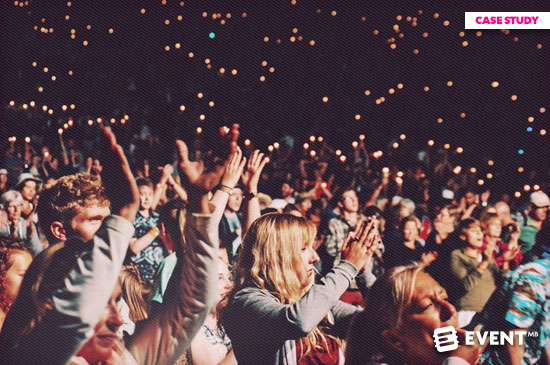
Streamlining the registration process can have a big impact on workload and numbers. This case study shares how the Colorado Judicial Branch doubled the number of attendees for their largest conference and saved countless hours of administration time.
How This Event Boosted Their Success [Case Study]
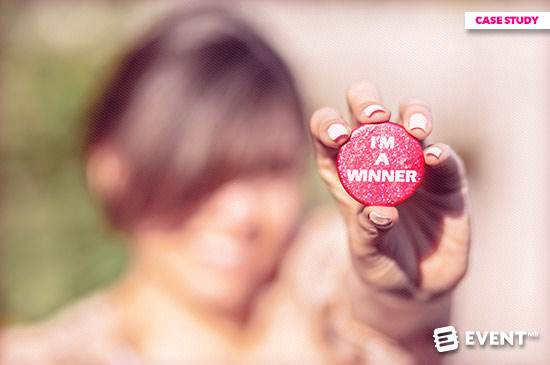
Running regional events as part of a country-wide tour has plenty of challenges. This case study looks at how The Get Fit and Thick tour streamlined their processes for event success across the US.
In Conclusion
As these 5 case studies demonstrate, events can make a difference at a micro and macro level. As an industry let’s make a pledge to share our learnings, both positive and negative. By taking this bold step we can educate and support each other to run more effective events and further professionalize the event industry and spend event budget where they will yield the greatest results. We know the importance of events, and event technology , we need to do more to prove it to those that still need convincing.
New Bureau Launches to Meet High Demand for AI Speakers
Keynote speakers with expertise in artificial intelligence are in high demand as organizations embrace the new technology. One emerging speakers bureau is crafting bespoke sessions to meet client objectives.

New FTC Rule Addresses Common Event Scams
A new ruling by the Federal Trade Commission targets scammers seeking to rip off the business events industry, paving the way for direct monetary compensation from bad actors.

The New Age of Data-Driven Event Strategies
In the quest to navigate the event data deluge, the real challenge lies in separating insightful narratives from mere numbers. It's the human touch—crafting memorable experiences and compelling stories—that will ultimately define the success of events in the data-driven age.

Why Pipeline Is the Ultimate Goal of Building Communities
Sales pipeline and community engagement aren't inherently at odds. When the balance is right, companies can successfully foster, support and monetize communities that positively affect their profits.
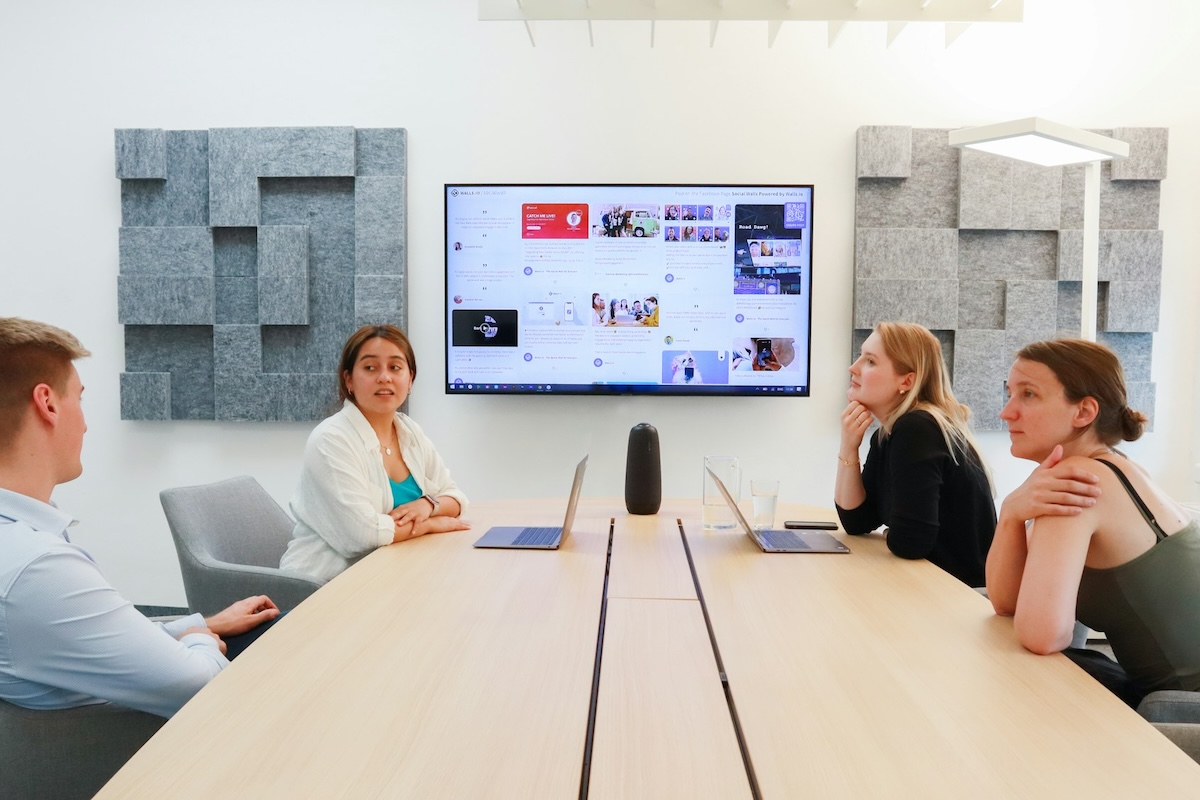
How to Plan for Attendees with Dietary Requirements
Vegan, gluten-free, paleo, and nut allergies are just some of the dietary requirements that event professionals should be aware of.

Get the Skift Meetings Standup Newsletter
Our biweekly newsletter delivers fresh, original content – straight to your inbox, every Tuesday and Thursday.

How to Craft a Post-Event Case Study

People say there’s no better teacher than experience, but the lesson can’t fully be understood without first putting the story into context.
Reports contain a wealth of valuable information but understanding the big picture is the job of a comprehensive after-event case study. The self-examination a case study provides helps identify the subtler trends, queues and missteps that occurred during the planning and execution of an event, allowing you to address them long before they can become problems at future events. It also provides you with the opportunity to capitalize on areas of your plan with the potential to increase your success rate and prove your success.
Of course, you want to create a case study that details the event, but you also want to create a document that engages its readers. If you are unsure how to get started telling your event’s story, don’t stress, just concentrate on these five important writing rules and you’ll create a complete accounting of your event, as well a great story.
Tell a Good Story
It’s important to identify any fault lines running through your event’s plan, but no one wants to be inundated with negativity. Create a story that allows people to get excited about the high points as they learn about any issues that arose.
Thoughtful use of phrasing is your weapon here—after all, it’s your chance to make your work look its best—but you don’t want to lie or slant the information unfairly. Always tell the tale from a place of neutral acceptance, rather than adding unnecessary dramatic flair or overenthusiastic compliments. If you load up your narrative with too much emotion it diminishes the validity of your reporting.
Three Plot Structure
Every story has a beginning, a middle and an end. Case studies are plotted the exact same way, with an overview of the event at the beginning, a step-by-step accounting of the entire process filling in the middle, and the results of your work as your conclusion.
TIP: Greater Giving Event Software will help you easily track all the details related to an event, making the creating of a great case study easier than ever before! With Greater Giving Event Software you can:
- Manage and track event sponsors
- Track registration, bidders, donors, and procurement
- Create, send and store promotional and thank-you emails
- Capture, centralize, track and manage benefit event or auction details
- Build professional-looking reports
- Track success year-to-year for improved planning over time
Begin by with an explanation of your mission statement, describe your target audience and state your goals. Next, list the strategies and tactics you based on to decide on a theme and program and provide specific information about the reason you chose your vendors. Detail the happenings at the event, with specifics on what was experienced throughout the evening, leading the reader through to the night’s conclusion, then conclude with the results, whether it be in donations, attendance or something else of importance to your organization. If you’ve proven the event was a success; declare it. If the event failed to meet your expectations, provide suggested solutions to the problems you’ve identified in your case study.
Details, Details, Details
You’ve got the basics covered, now it’s time to fill in your case study with interesting details that reveal how the whole event came together. Throughout the case study pull out specific details that aided or hindered the success of the night. Record the highs and lows experienced from set up, to tear down. Call out stand-out team players and service providers that either aided or hampered the activities. Adding as much detail as possible to your case study archives the secrets of your success for future planning.
Deepening the Sensory Experience
Incorporating audio/visual experiences into case studies saved online offers yet another view with new perspectives for future readers. Let readers experience the event through photos, recordings and videos so they can see and hear for themselves what you witnessed. This provides another layer of connection for the readers of your case study and acts as a third leg to prop up your arguments when you want to redirect your efforts or ask for a larger budget.
Instruct your team to use their mobile phones throughout the night to record everything they find interesting, difficult or exciting about the evening. When putting your case study together search for additional footage from attendees through the hashtag you generated for event night to get your attendees perspective, as well.
Seek Out Testimonials from Attendees and Sponsors
Nothing speaks louder than the accolades of your community. Ask for quotes from your sponsors and guests and add them into breakout boxes to increase visual interest in your case study. Look for quotes that back up the information you’ve gleaned from your reporting and place it in the document next to that specific information. Focus your questions on different portions of the night’s program. Ask your guests and sponsors questions such as whether the theme reflect the mission of the organization? Did the sponsors feel as though they were represented properly? Was the entertainment a compliment to the organization’s mission?

Dathan Montes
Dathan is the Digital Marketing Associate at Greater Giving where he is focused on marketing initiatives benefiting the sales and customer support departments. Prior to his current role, he spent several years working in the online search marketing industry. Outside of Greater Giving, Dathan enjoys spending time with his family, collecting and restoring vintage BMX bicycles.
Share your thoughts
Click here to cancel reply.
Name (required)
Email (will not be published) (required)
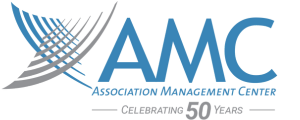
Case Study: Event Marketing
Amc provides sgo with marketing support; increases meeting attendance.
The Society of Gynecologic Oncology's (SGO) Annual Meeting on Women's Cancer is one of the biggest events in the gynecologic oncology specialty field each year. This annual meeting, held across 4 days in a North American city, attracts more than 2,000 specialists each year.
The planning and execution of such a large event is no small undertaking for SGO staff who handle everything from setting the education schedule to planning special networking events to managing onsite logistics. And without a full-time marketer on the payroll, promoting the meeting is another task that fell to SGO staff. Realizing their lack of capacity to market such a large event, SGO reached out to Association Management Center (AMC) in 2017 for help marketing their 2018 meeting.
AMC's Creative Media Services team leveraged a 20-person team of marketing and creative professionals with expertise in campaign strategy, event marketing, digital advertising, analytics, and email and web copy writing to help fill the marketing role on SGO's staff. Through this team approach, SGO maintained a primary point of contact at AMC while being able to access the resources of the creative team. This allowed SGO to tap into more resources and expertise than what a single marketing professional could provide.
To best understand SGO's needs and goals, AMC conducted an initial kickoff meeting and assessment to identify key audiences; identified opportunity areas for increased attendance; defined unique meeting benefits and aligned them with specific audiences; established key messaging concepts; and identified tactics and channels.
Though AMC drove the strategy, SGO provided insight into its members that informed our decisions. This campaign was a true collaboration—for example, SGO's graphic design and web staff created materials under AMC's direction.
Utilizing SGO's past attendee data, AMC developed targeted audience segments to identify the largest opportunities for growth and crafted unique messaging to highlight the meeting benefits by audience. AMC ran a Google AdWords campaign to target new audiences, advertised in SGO's digital newsletter and journal, wrote unique e-mail copy for each audience segment, and wrote web copy to optimize key webpages.
By taking the time to fully understand the audience and using tried-and-true methods to reach them where they are, AMC was able to increase engagement among SGO's desired audiences. Ultimately, the 2018 SGO Annual Meeting on Women's Cancer saw more attendees than the previous year.
To measure performance, AMC used campaign tagging and analytics to track the success of each marketing channel and refined tactics as the campaign progressed to optimize efforts for SGO's audiences. CMS helped SGO increase total conference attendance by 3%, which included a 5% increase in attendance for the audiences specifically targeted in the campaign, breaking all previous attendance records.
This project resulted in an ongoing partnership between AMC and SGO that provides marketing strategy and access to a full suite of marketers on a campaign-by-campaign basis while keeping costs in line with SGO's overall budget. AMC went on to market the 2019 and 2020 meetings as well as another event.
"AMC's marketing team has been an invaluable partner to SGO," said Ellen Sullivan, SGO's chief communications and membership officer. "We value their expertise, efficiency, professionalism, and results. Truly impressive."
By continuing to work on these campaigns, AMC is able to introduce efficiencies and enhance the campaigns' effectiveness. The structure of these campaigns has largely stayed similar, and refinements are introduced based on the new audiences and event offerings.
8735 W. Higgins Road, Suite 300 • Chicago, IL 60631 847.375.4700 • (Fax) 847.375.6401 Privacy Policy
Connect with Us


IMAGES
VIDEO
COMMENTS
On the surface this is a straightforward case study about a creative event marketing idea involving an app that got results in the areas of brand awareness, relationship building, and even an actual deal. But it's also about the process. Getting buy-in for creative marketing ideas. The challenges in getting the event marketing campaign teed up.
Case Study 3: Hybrid Event In The Information Technology Sector. In this customer story, an IT company adeptly bridged the gap between physical and digital spaces, setting up a hybrid event that attracted a broad audience. The event showcased the platform's security features, underscoring the importance of safety in memorable experiences.
Meeting and chatting with peers. Live Q&As. Virtual vendor booths. 1:1 speed networking. Pro tip: if you're thinking about entering the world of virtual event marketing, make sure you've got an online event platform like Livestorm that enables interactivity through live polling, question upvoting, and breakout rooms.
Pulls off their annual film festival. Launches events fast with a lean team. Eliminated rogue events & scaled globally. Enables 56 branches to host their own events. Consistently built on-brand events. Saved their Marketing Ops team hundreds of hours annually. Tripled their pipeline & sales velocity.
Try to keep your headline under 12 words. Use action words: Incorporate action verbs such as "achieved," "transformed," or "boosted" to convey a sense of accomplishment. Include data: Numbers make your headline more credible. For example, if the case study achieved a 75% increase in sales, include that in the headline.
Get concrete examples of our process from ideation to completion with all sorts of spectacular clients. We're pleased to showcase a wide variety of design case studies for different events, exhibit types, spaces, and industries. You can also check out some eye candy on our Portfolio page.
Conversion Rate for Ad Council LinkedIn Campaign. 2,800+. Qualified Leads Generated for a B2B SaaS Company. In our event case study we explore how Llama Lead Gen used Facebook, Instagram, and LinkedIn to drive 155 attributed registrations (a $92,845 value) for a financial expo.
Event marketing case study gives us an insight into what's happening at the backend of things. Marketing for an event can be a tedious process and requires spot-on execution. Planners constantly have to find creative ways to promote an event to stand out. Creative ways of promoting an event online too require the same amount of preparation.
Case Study: Building an event brand from the ground up and achieving a sell out audience. Long before I launched Barker Social, I was a niche event organizer on the side. Organizing great events is passion project of mine. I have years of experience hosting and marketing events in Toronto, New York City, and the Niagara Region.
Event Marketing & Management. Complete solution for virtual, in-person, and hybrid event success. Event Marketing & Management Overview. PLAN AND PROMOTE. Venue Management; ... See case study. Thousands of organizations rely on Cvent . 195 results found Platform. Event Marketing & Management. Suppliers & Venues ...
Chapter 11 Event Marketing Case Studies In this chapter, we will examine successful examples of event marketing including IMEX and EIBTM Malcom Forbes' Birthday Event The Olympic Games Sports Illustrated … - Selection from Event Marketing: How to Successfully Promote Events, Festivals, Conventions, and Expositions, Second Edition [Book]
The process involves conceptualizing the event theme and design and creating compelling branded content, which serves as the golden thread that weaves together all event elements. It serves to inform and entertain and reinforce the brand's narrative throughout the event to maximize brand engagement and recall. In short, branded events ...
Open up with a summary that communicates who your client is and why they reached out to you. Like in the other case study examples, you'll want to close out with a quantitative list of your achievements. 16. " NetApp ," by Evisort. Evisort opens up its NetApp case study with an at-a-glance overview of the client.
Resources for Event Professionals. Elevate your event with Stova's dedicated event technology resource library. Find our latest eBooks, white papers and event case studies created with event professionals in mind by Stova's industry experts. All Resources.
Here are 5 event case studies we can all learn from. Whether it is down to time, client confidentiality or protecting our ideas and ways of working eventprofs seem to struggle with shouting about our achievements and letting others benefit from our successes (or failures). When a project is over we brainstorm and analyze internally within our ...
TIP: Greater Giving Event Software will help you easily track all the details related to an event, making the creating of a great case study easier than ever before! With Greater Giving Event Software you can:. Manage and track event sponsors; Track registration, bidders, donors, and procurement; Create, send and store promotional and thank-you emails
3 Wak e eld 2012 USA Sport Event Case Study Cross Sectional Onsite Questionnaire 301-600 Attendees & TV Viewers Statistics 4 Li et al., 2013 China Sport Event Survey Cross Sectional Face-to-face ...
Organized by Event Management Lab by ADandPRLAB led by partner instructor Athena Fradelou and ass. Prof. Betty Tsakarestou. We are a group of seven students studying at Panteion University, Greece
The Maui Jim Maui Invitational is the premier early-season college basketball tournament held annually during Thanksgiving week. Each year, the Maui Jim Maui Invitational attracts the top programs, best-known coaches and most outstanding players to compete in an exciting atmosphere at the Lahaina Civic Center near the beautiful beaches of Maui ...
Without going into details about the methods, it's another typical third-person case study designed to build trust. 6. Video marketing case study: L'Oréal and YouTube. In this case study, various members of L'Oréal's global marketing team break down exactly how they used YouTube ads to launch a new product.
Red Bull's Marketing Strategy. By basing its marketing and advertising approach around promoting a high-energy philosophy for the lives of its consumers, Red Bull arguably sells a way of life rather than a simple energy drink product. This is most prevalent in the range of extreme sporting events that it hosts and sponsors, working with ...
Published Jul 4, 2023. Red Bull, a global energy drink brand, has achieved tremendous success in the beverage industry with its unique marketing strategy. This case study analyzes the key elements ...
Case Study: Event Marketing AMC Provides SGO with Marketing Support; Increases Meeting Attendance Challenge. The Society of Gynecologic Oncology's (SGO) Annual Meeting on Women's Cancer is one of the biggest events in the gynecologic oncology specialty field each year. This annual meeting, held across 4 days in a North American city, attracts more than 2,000 specialists each year.